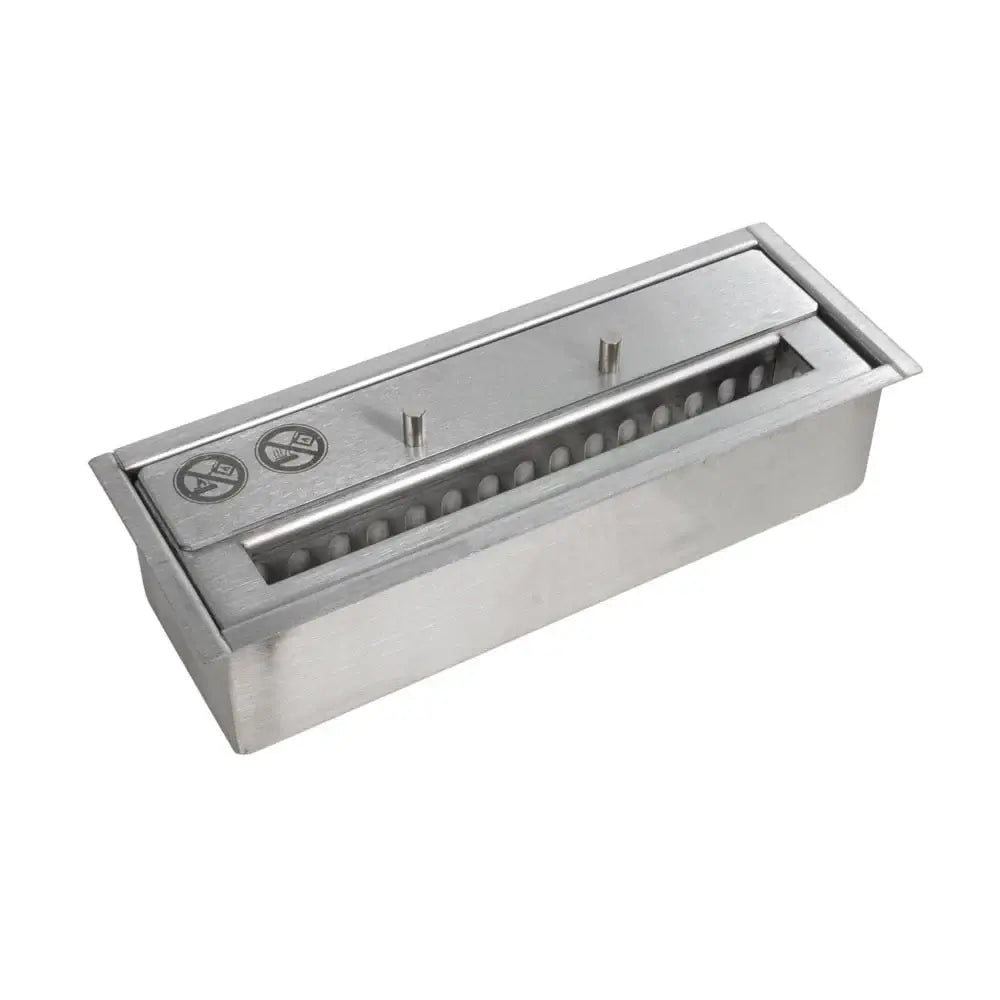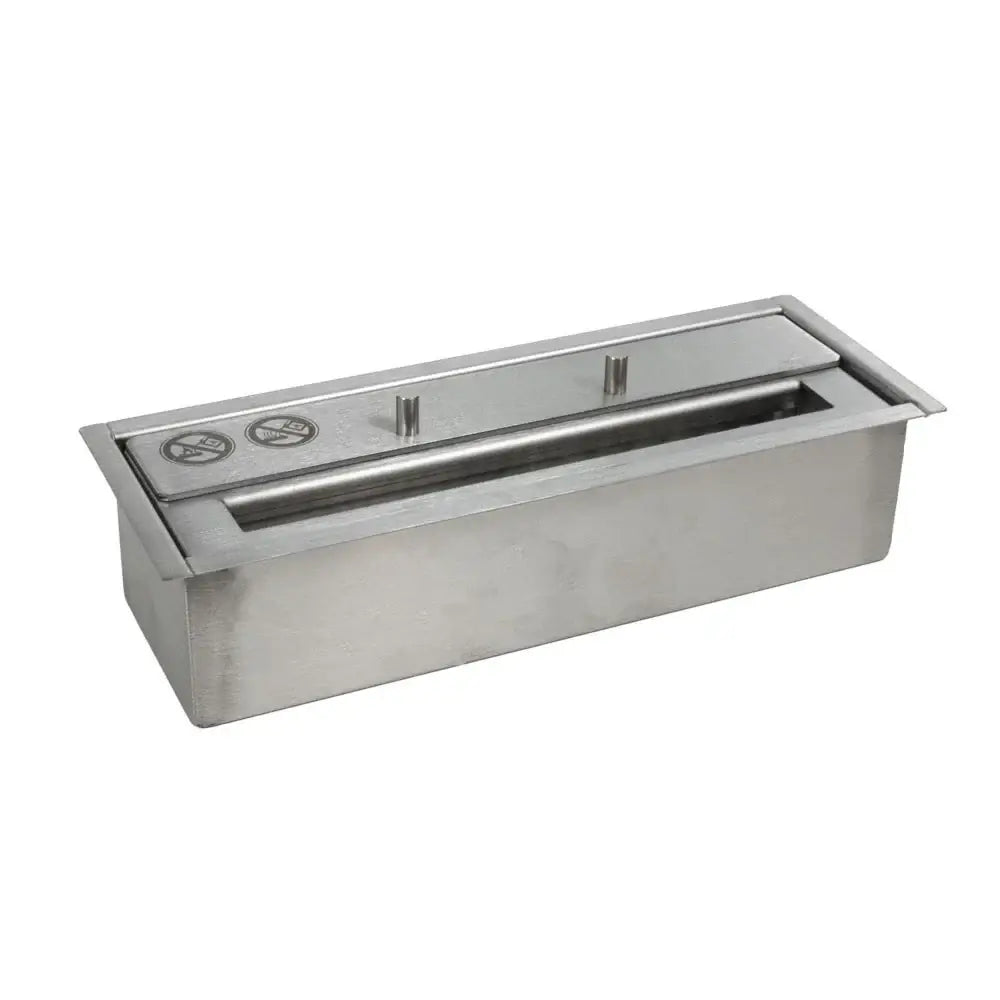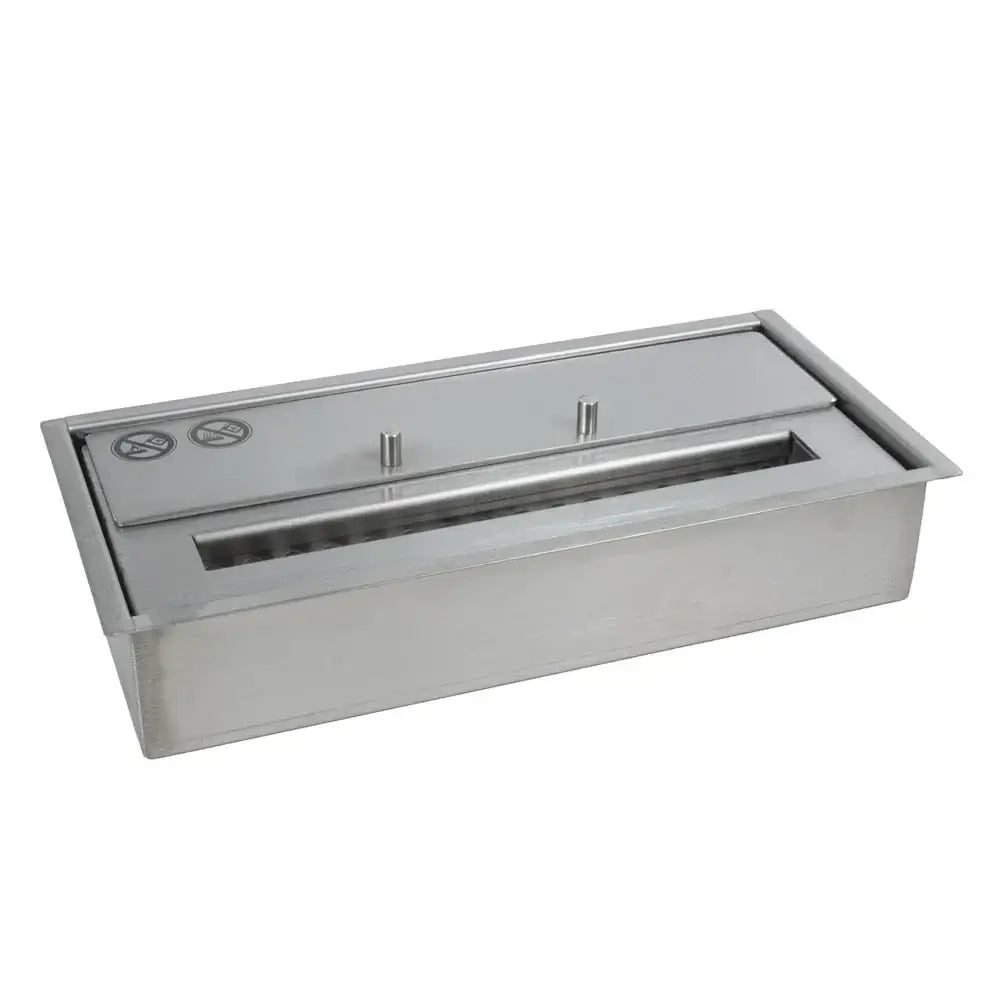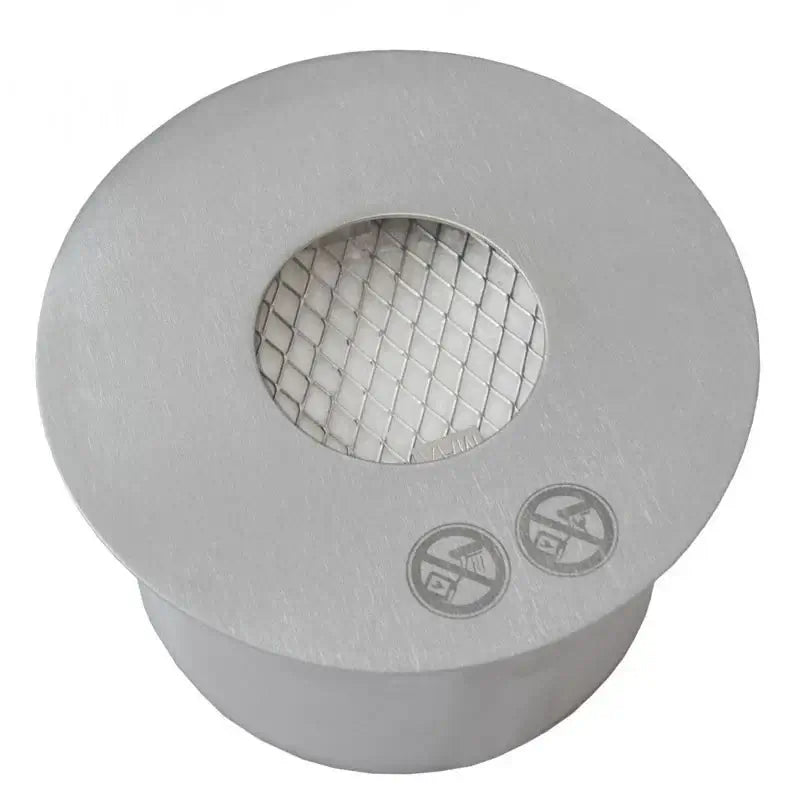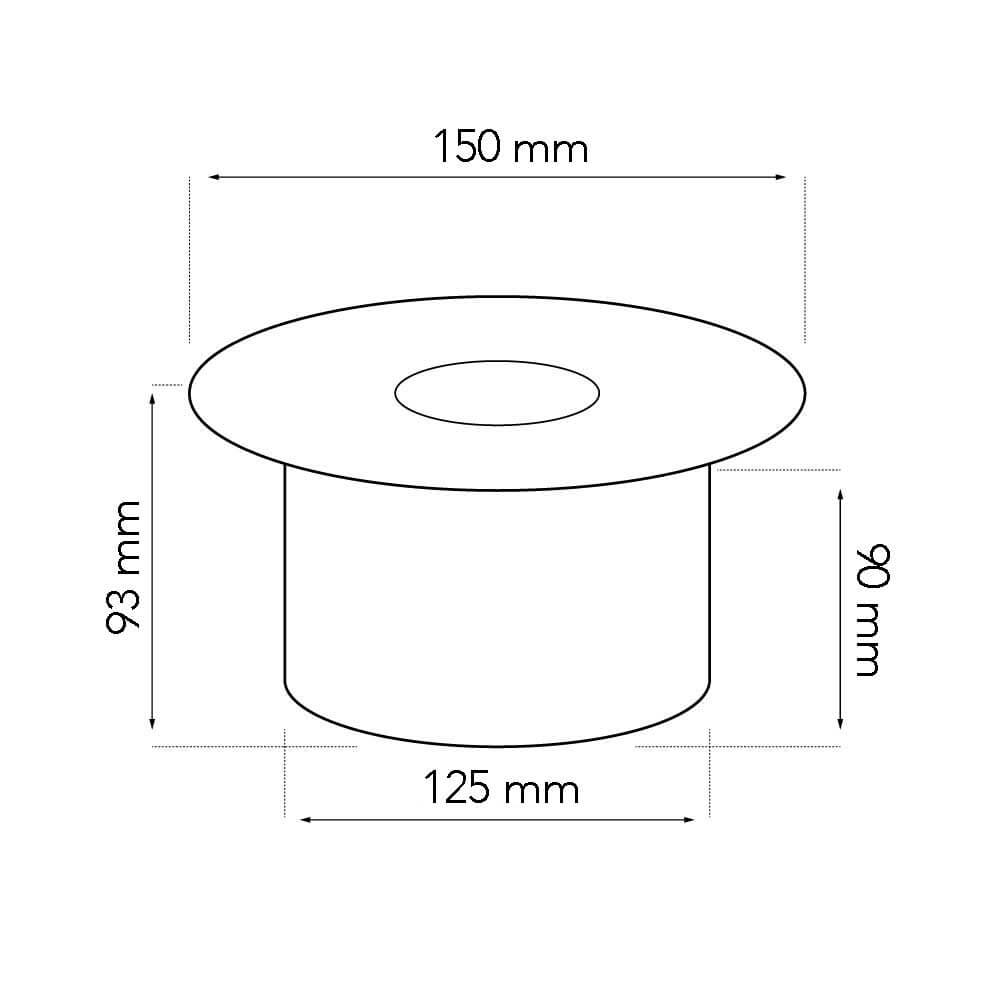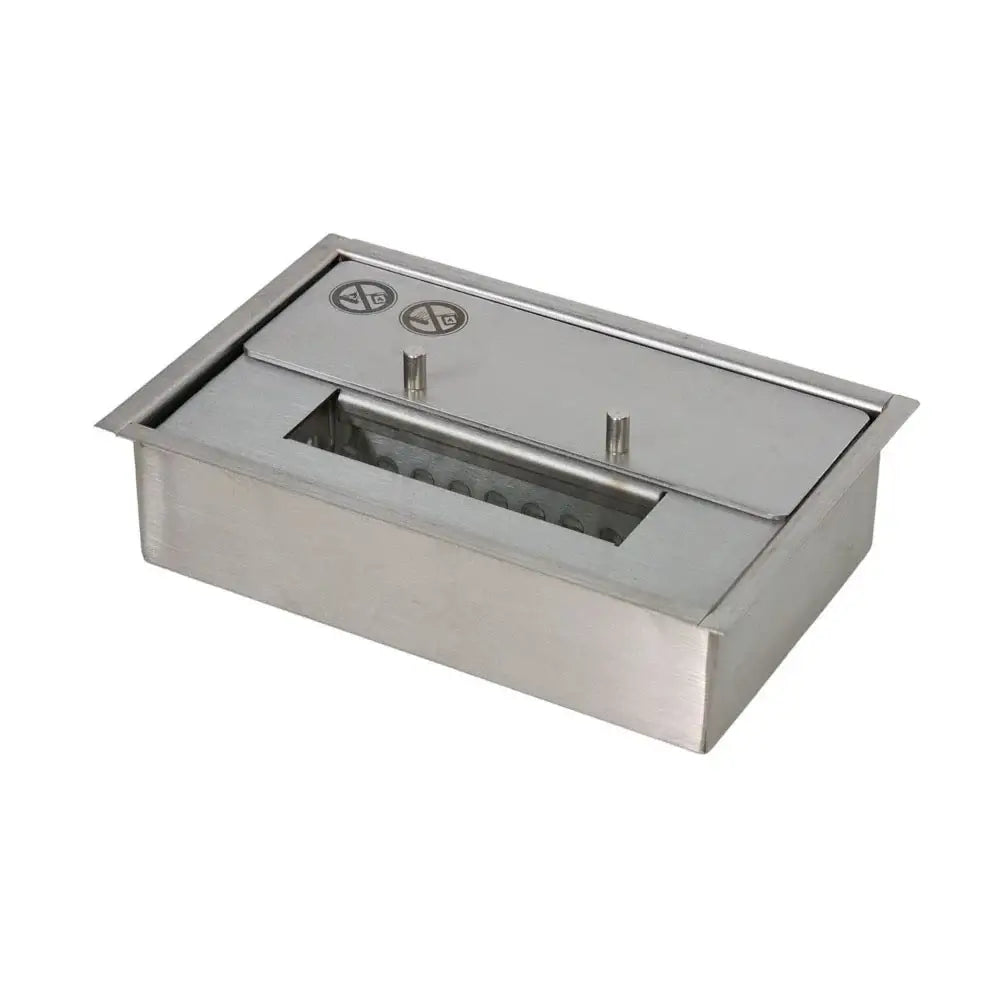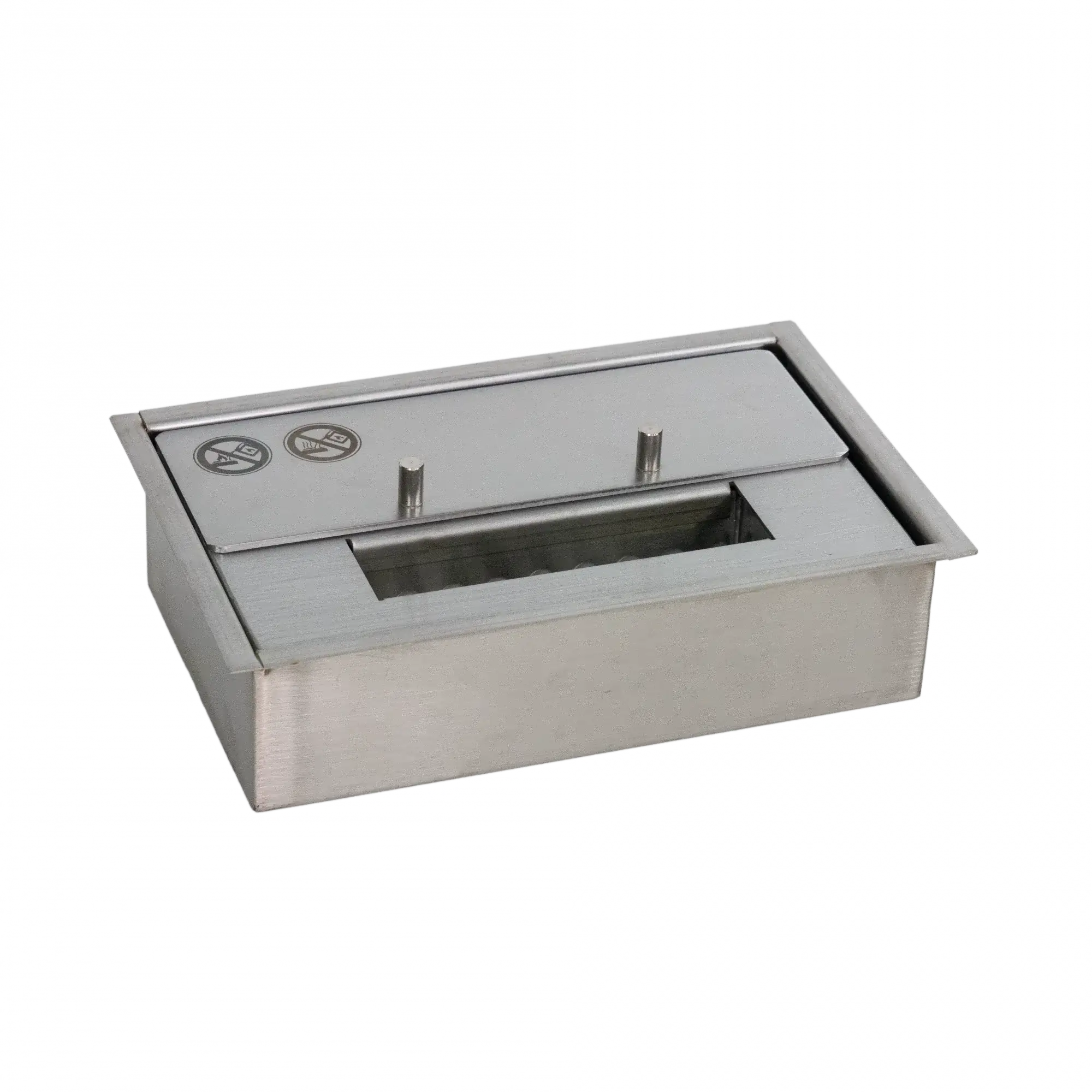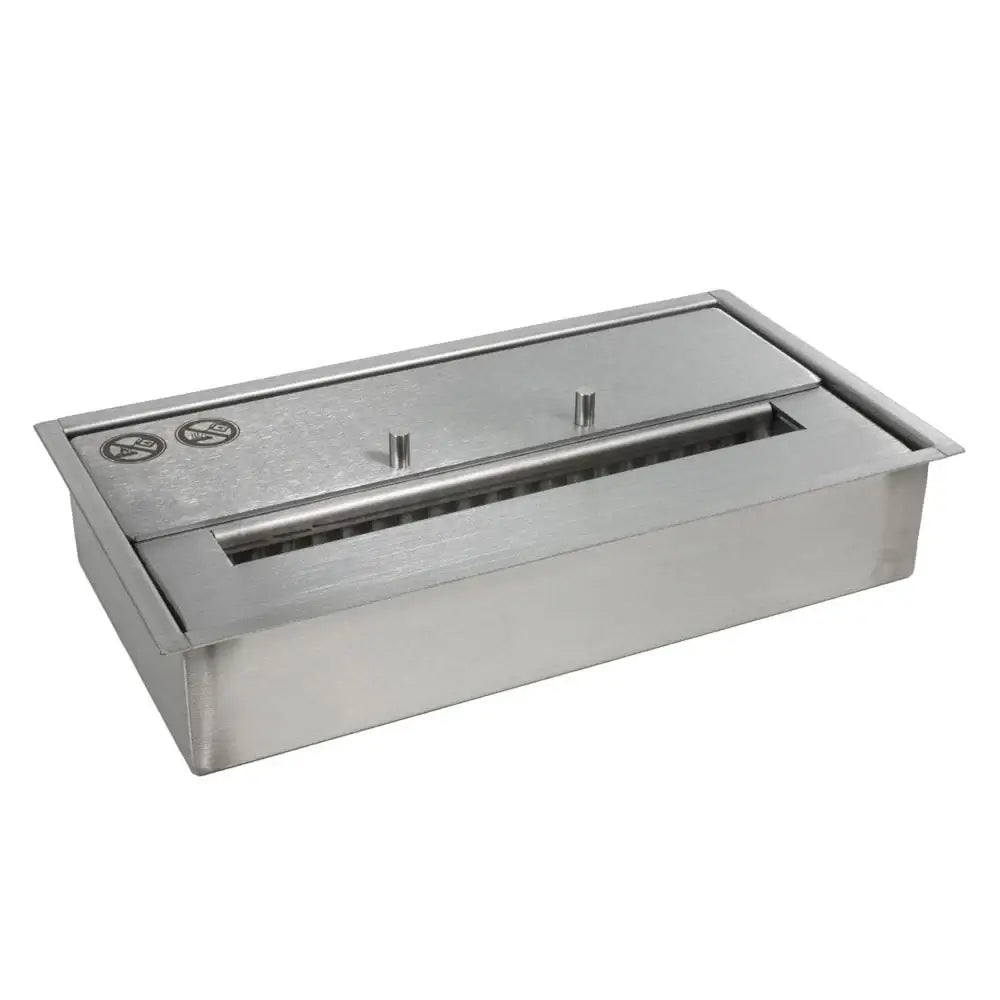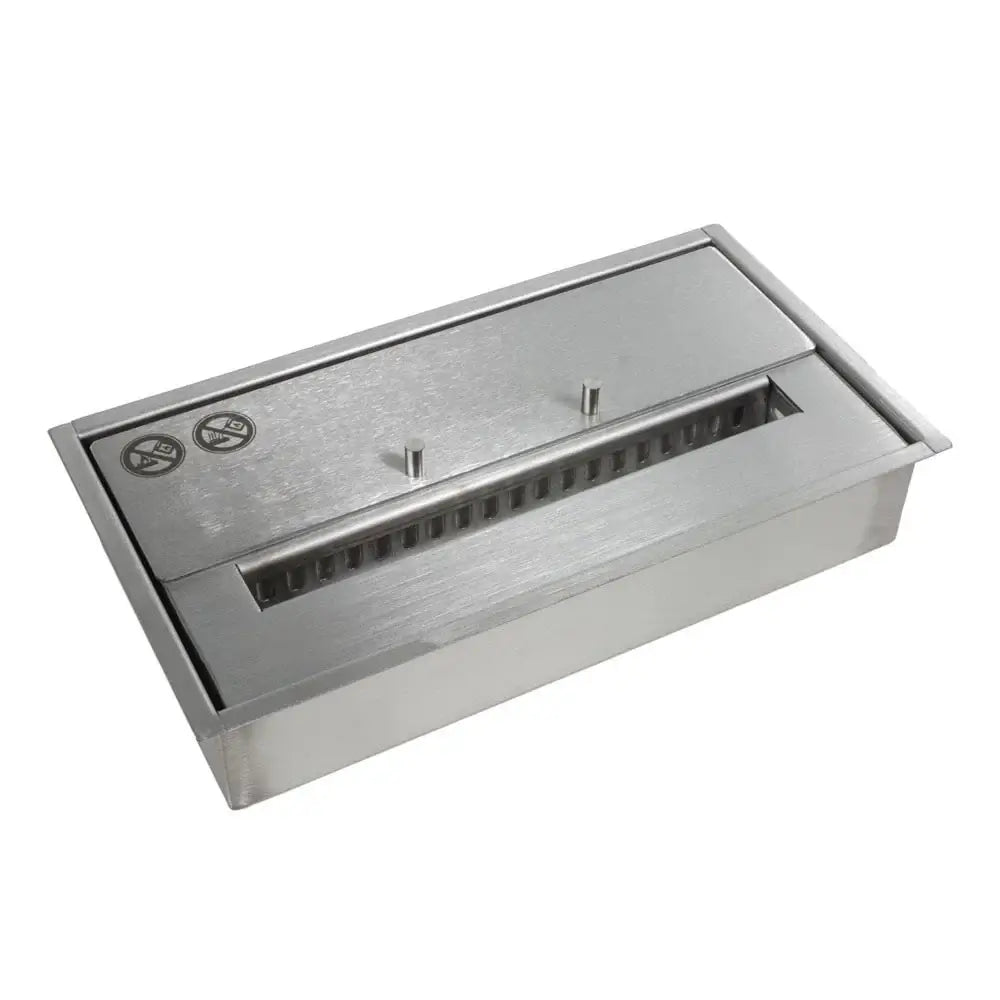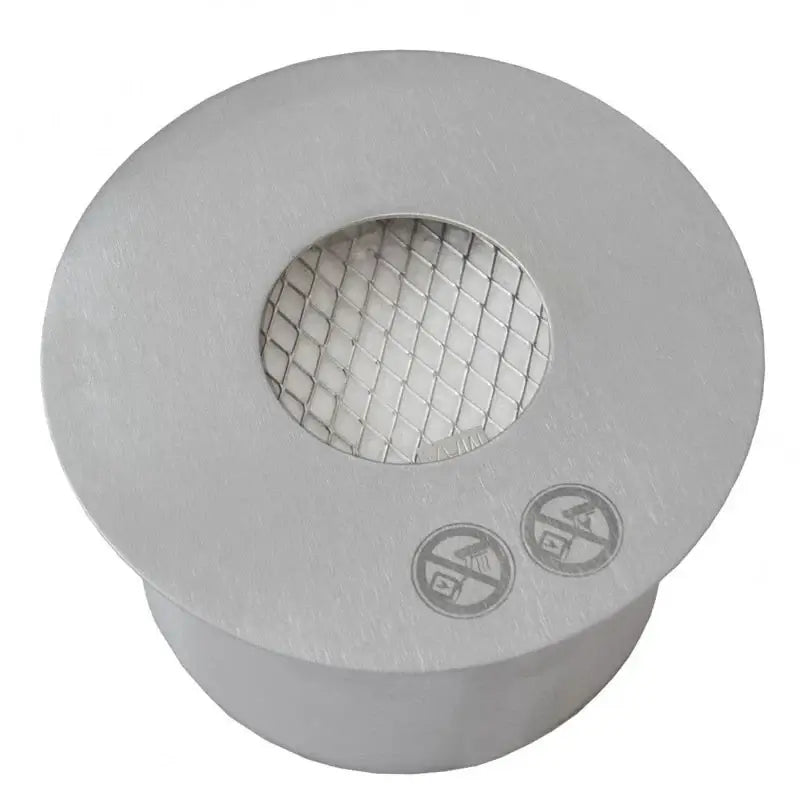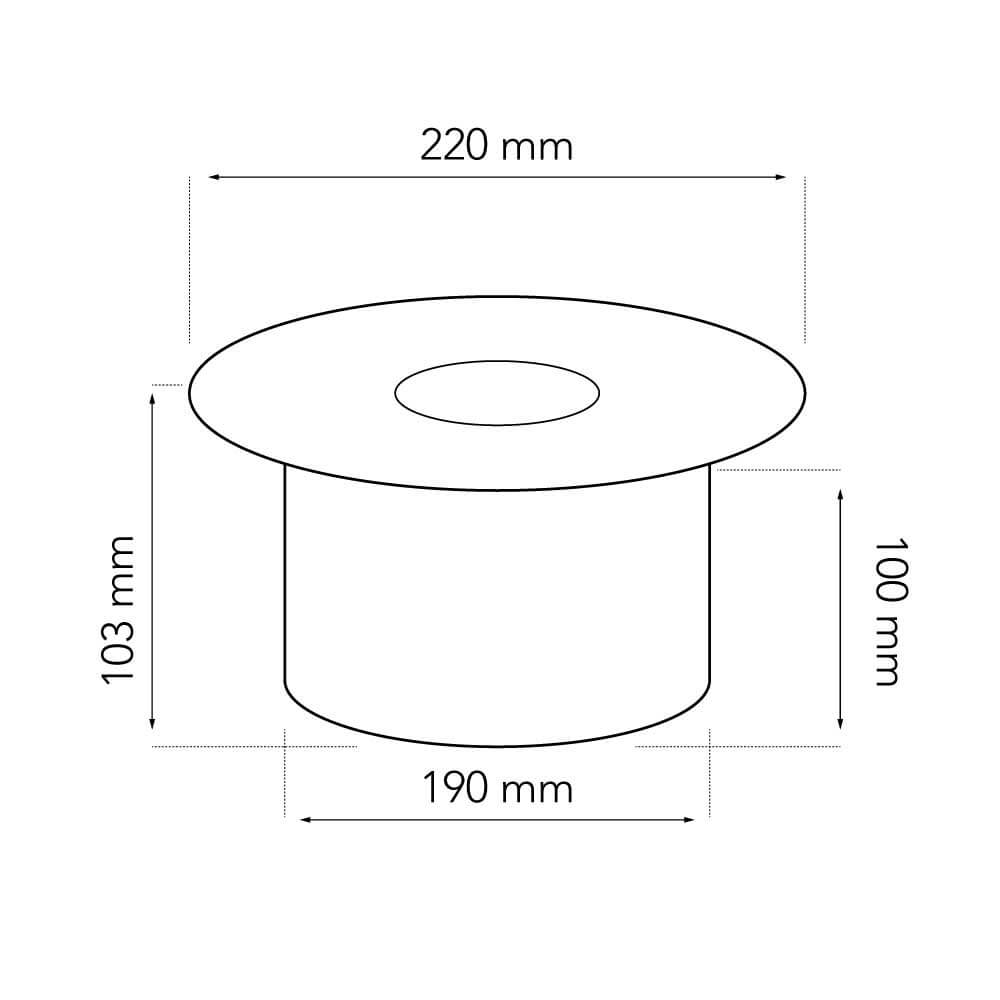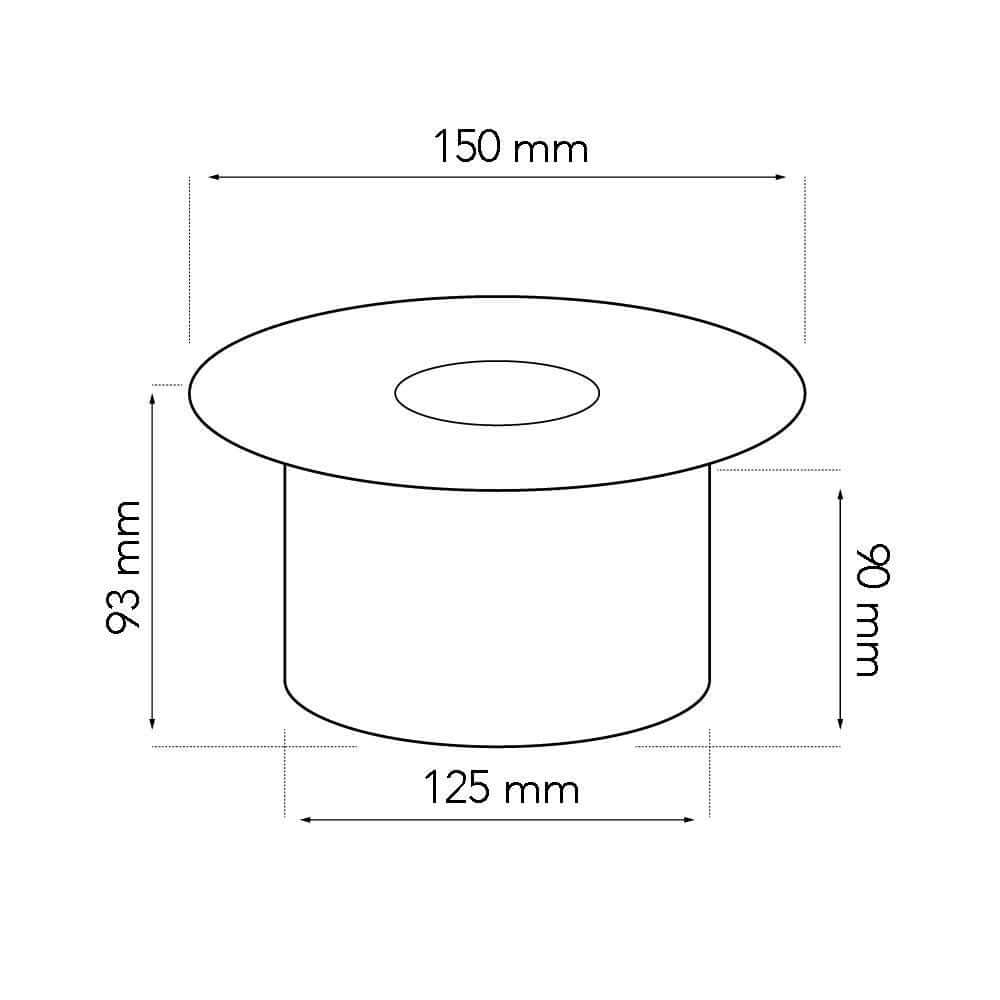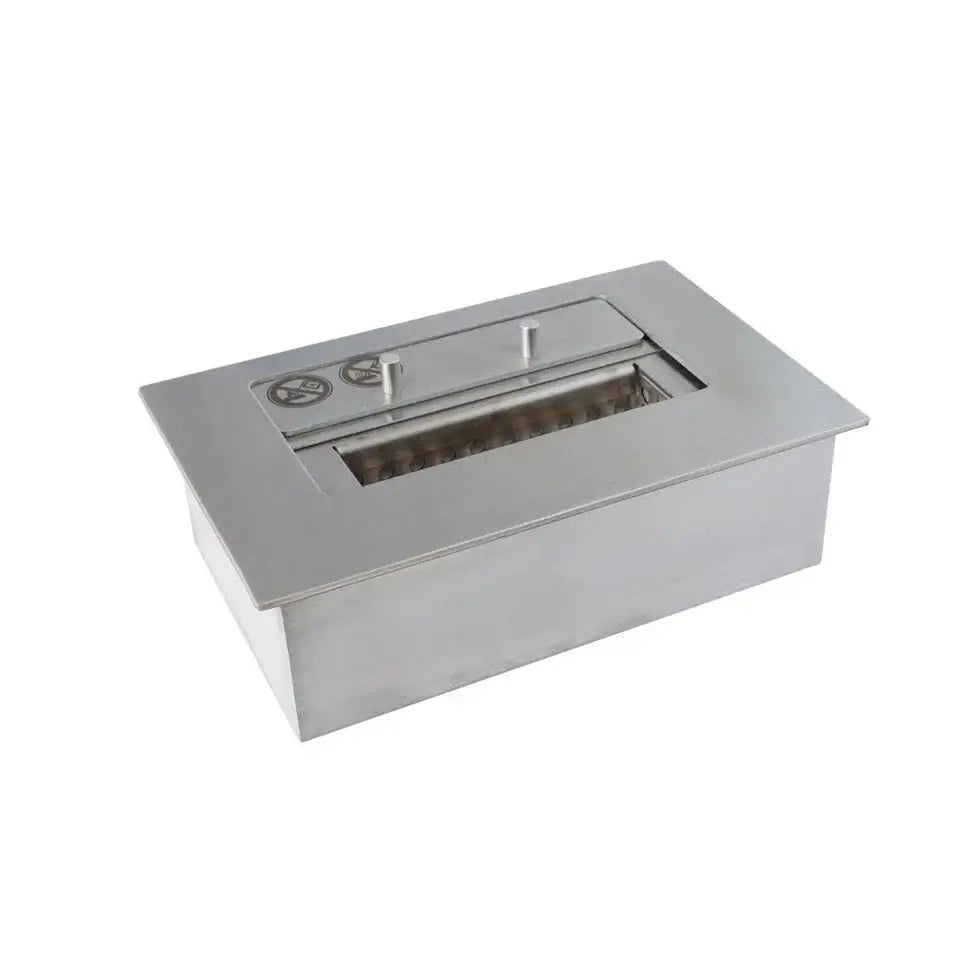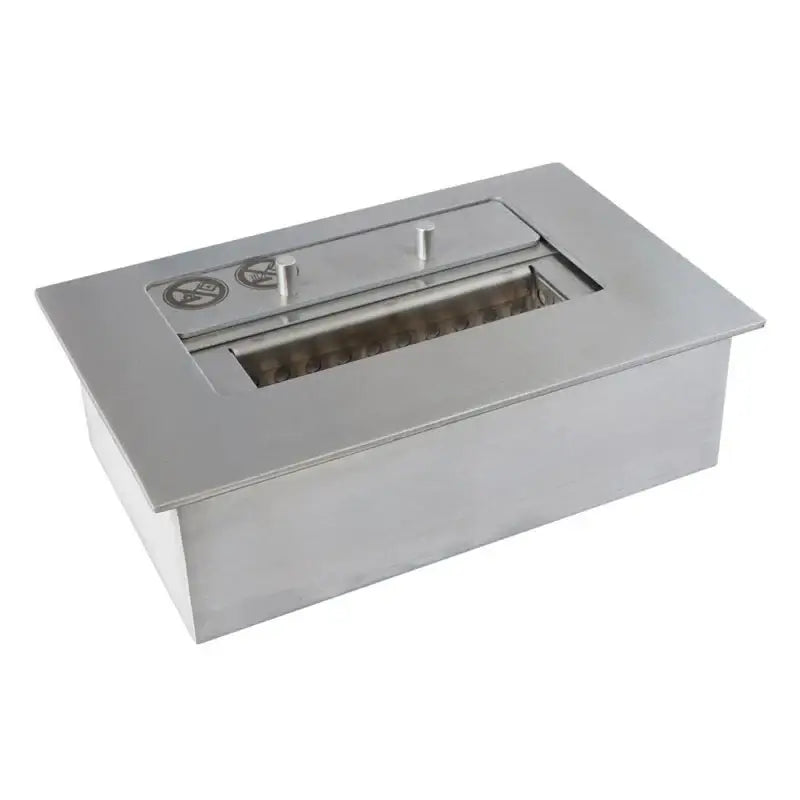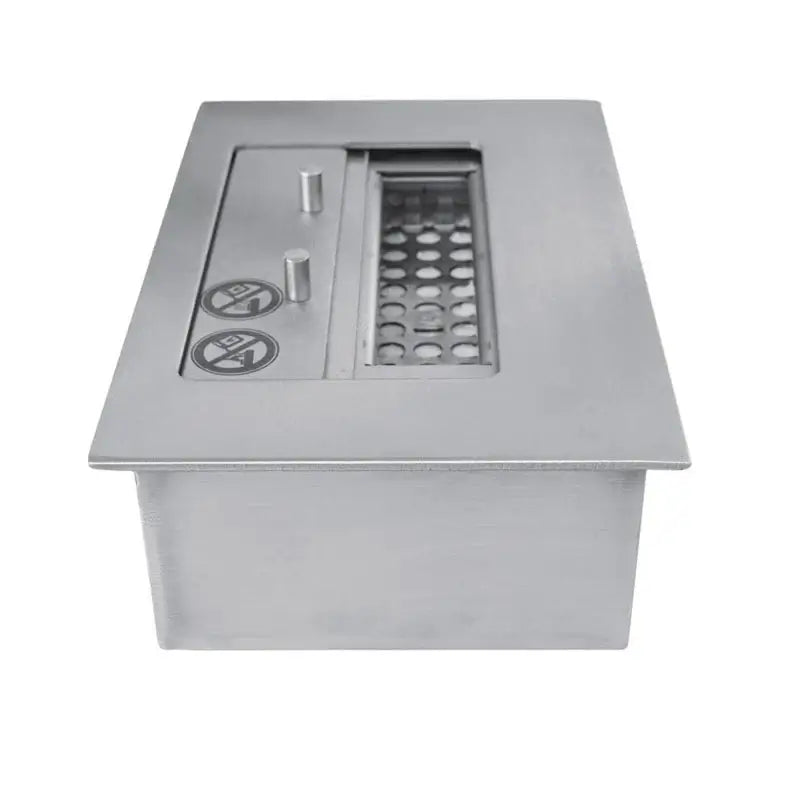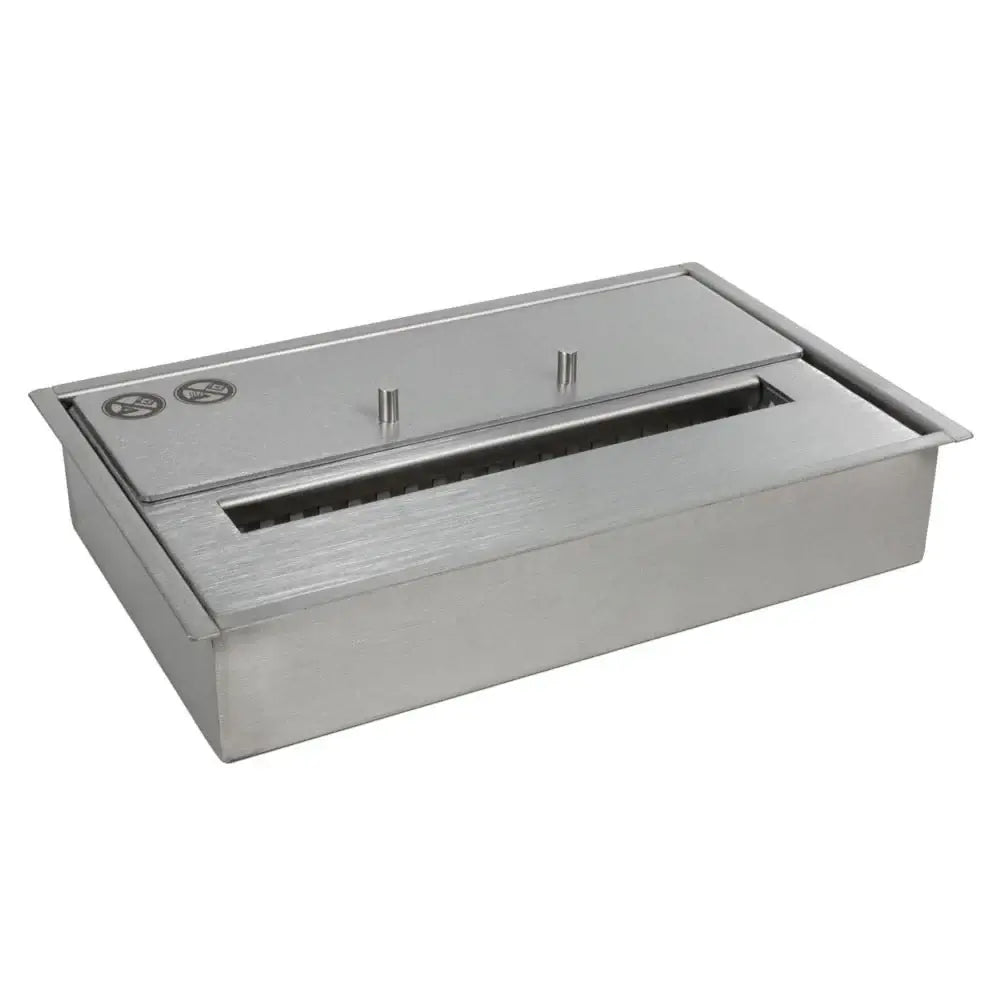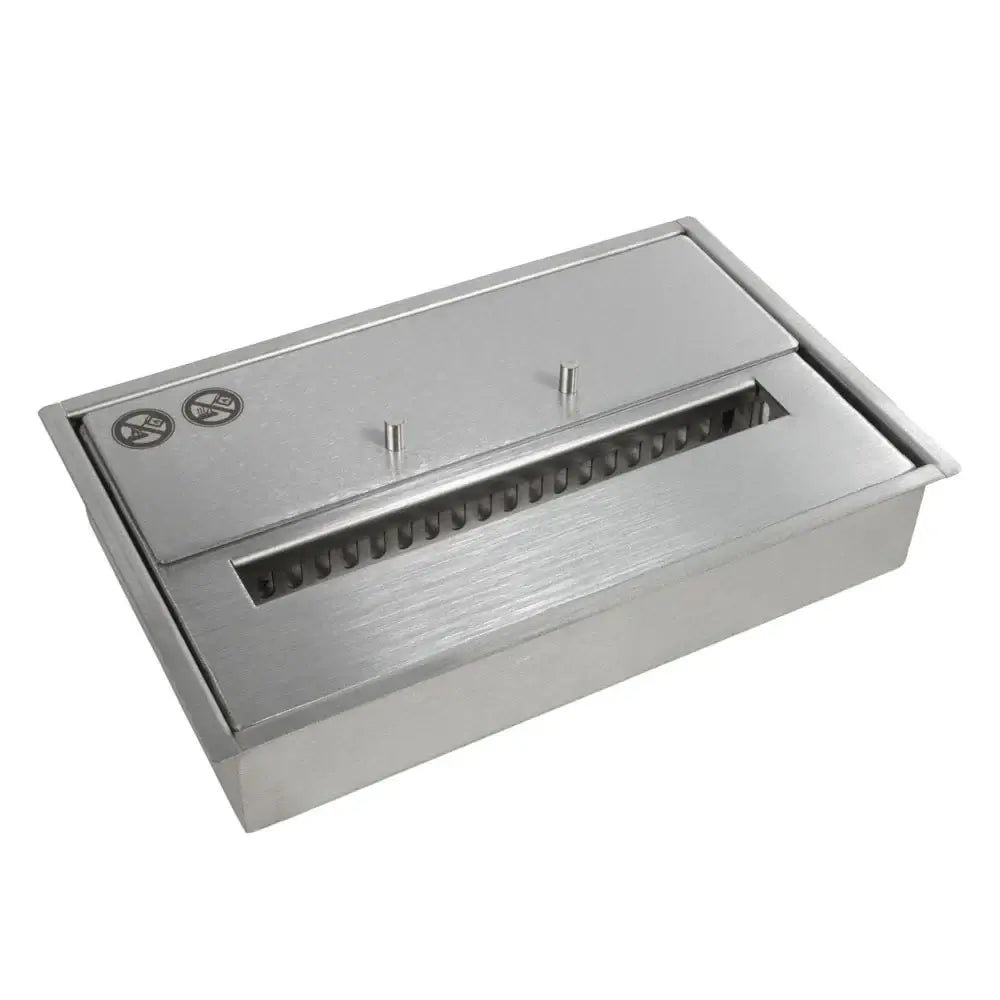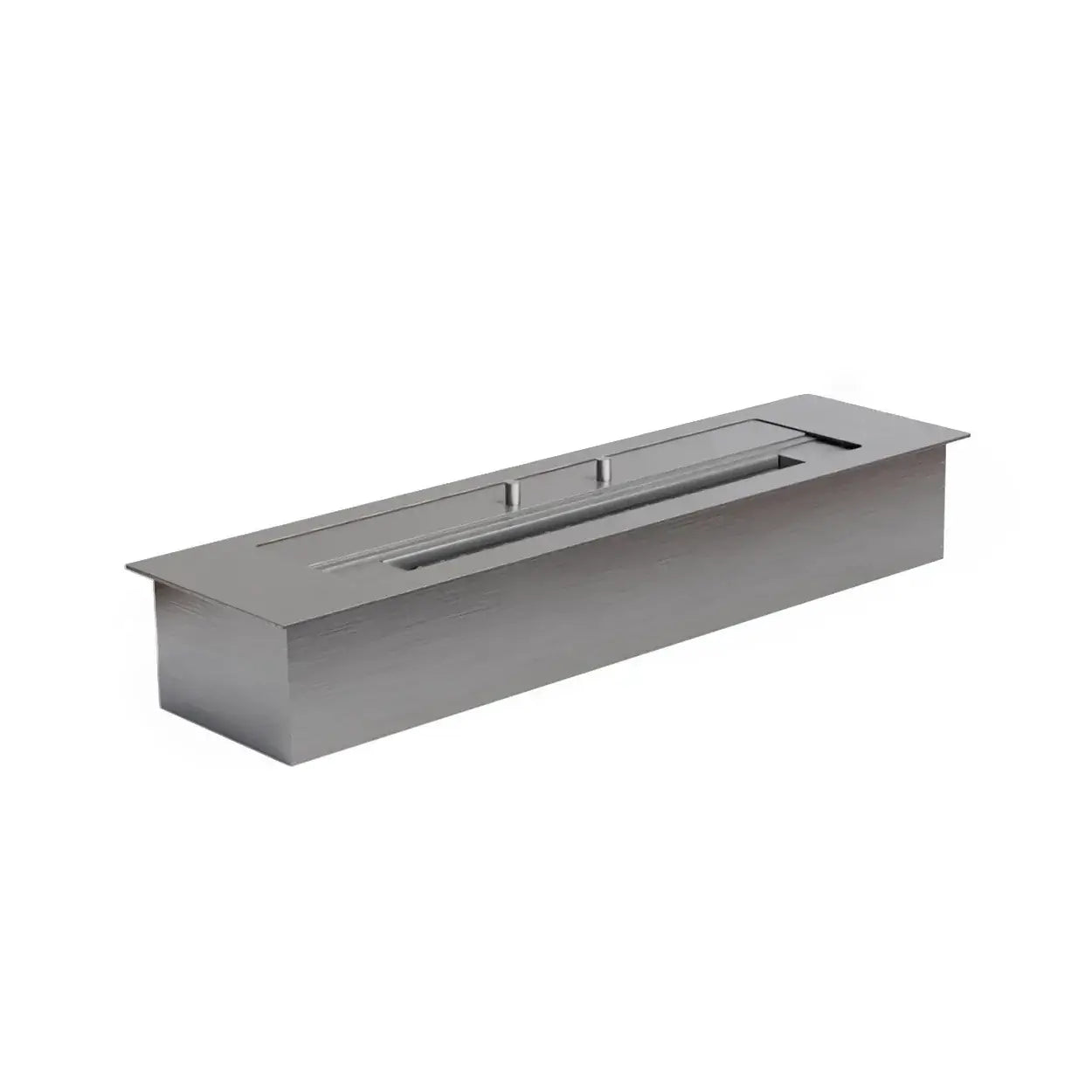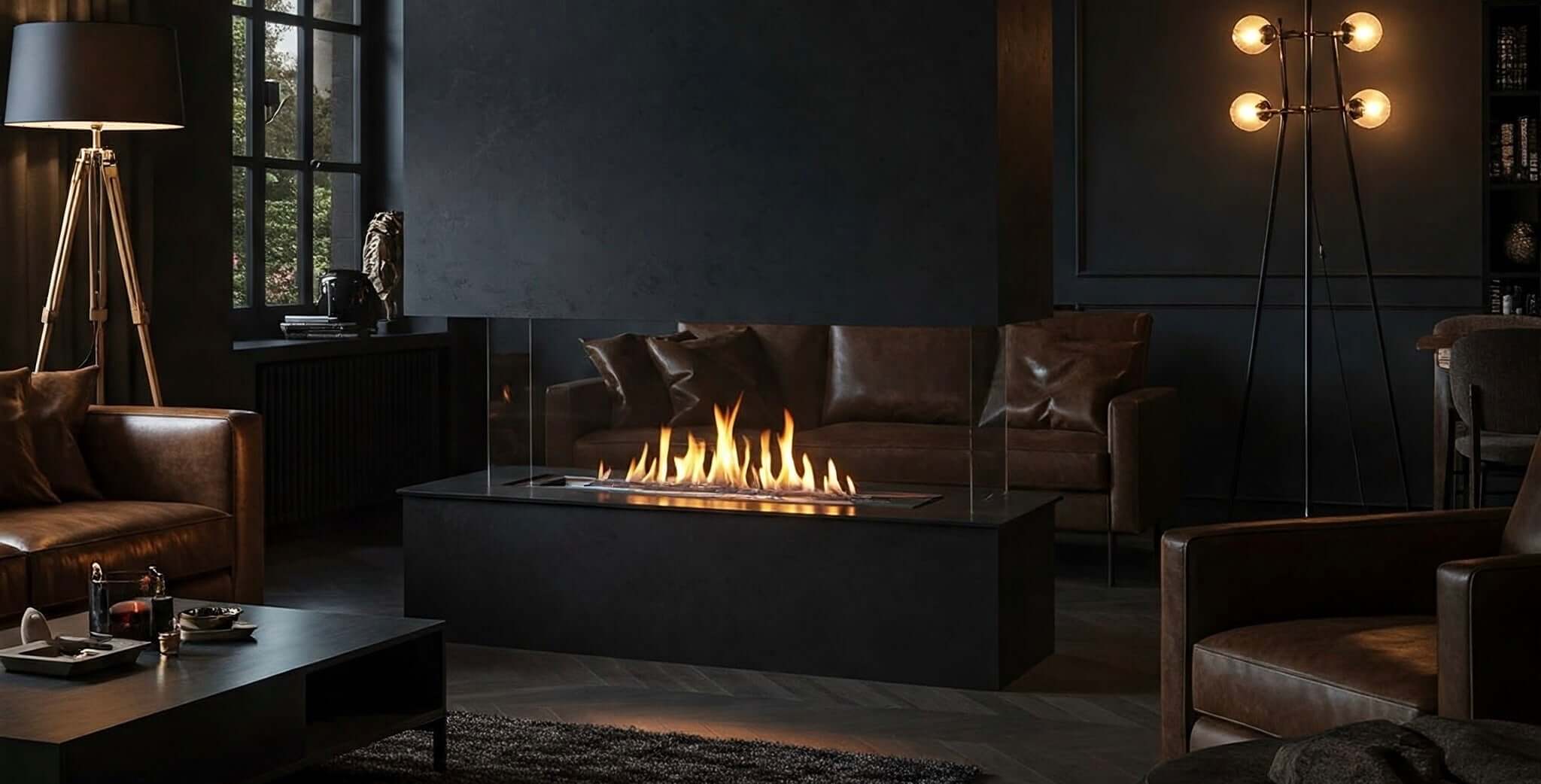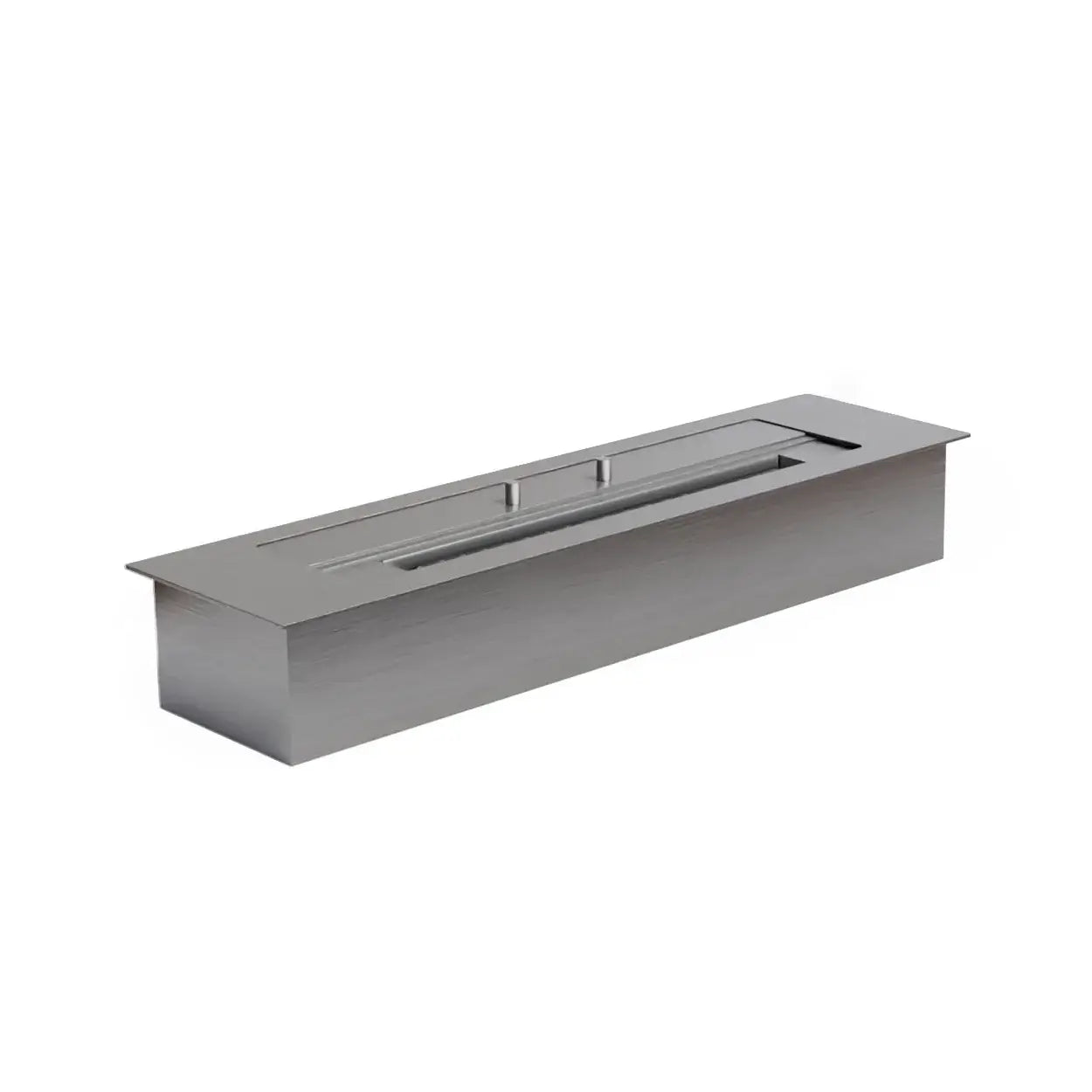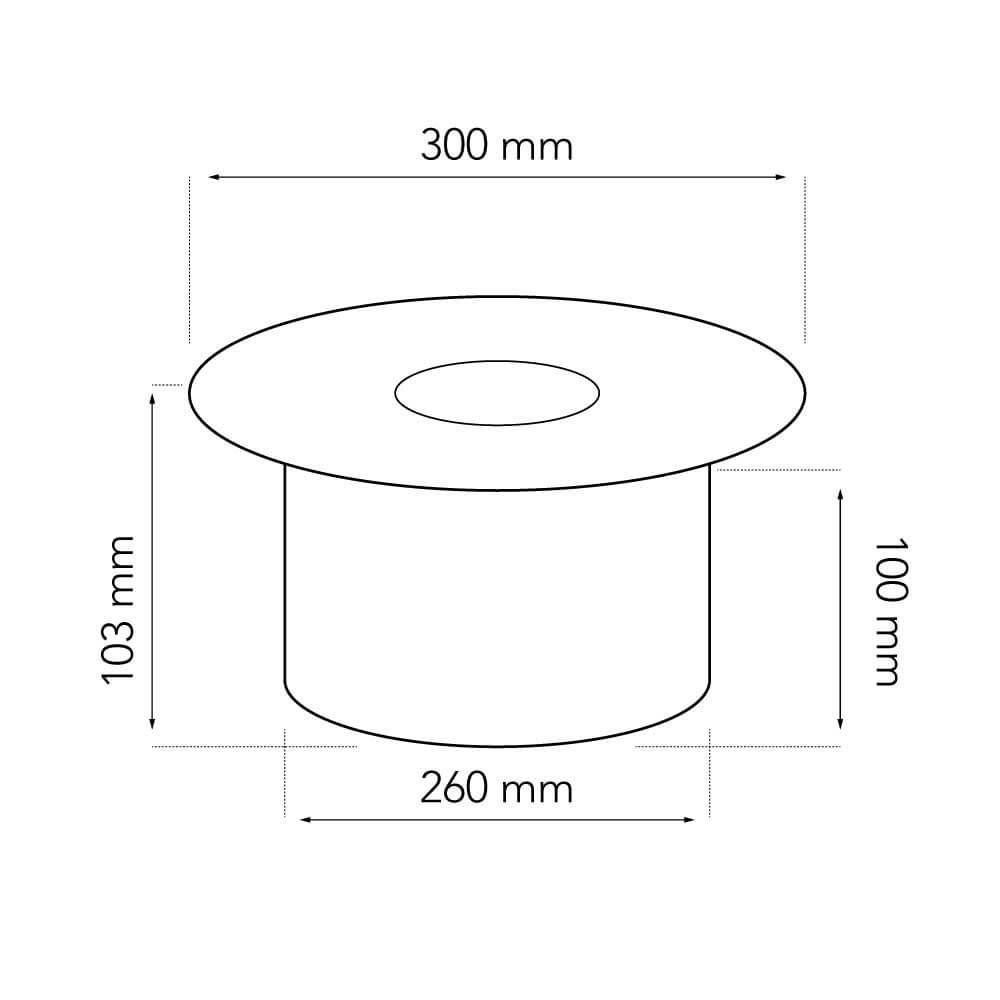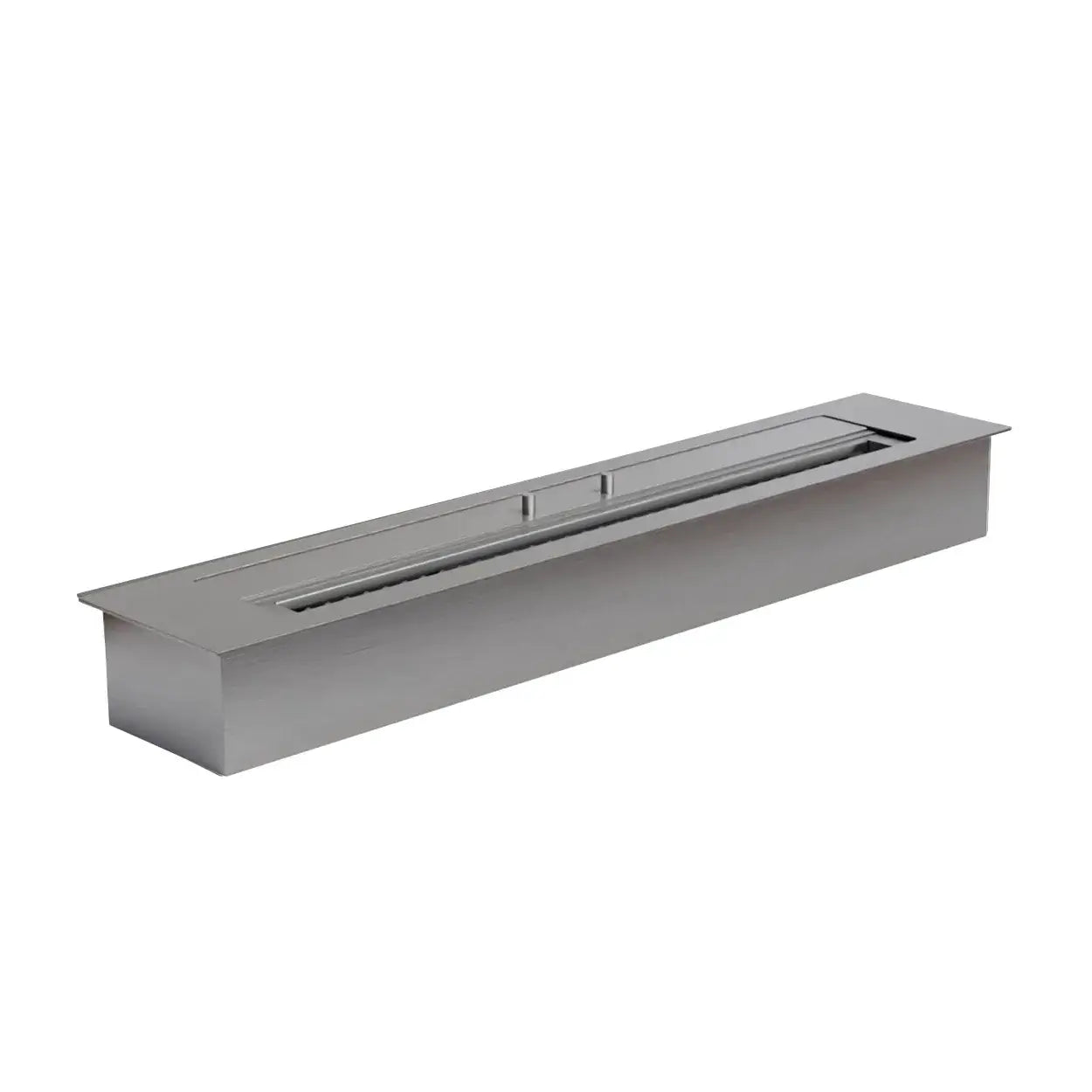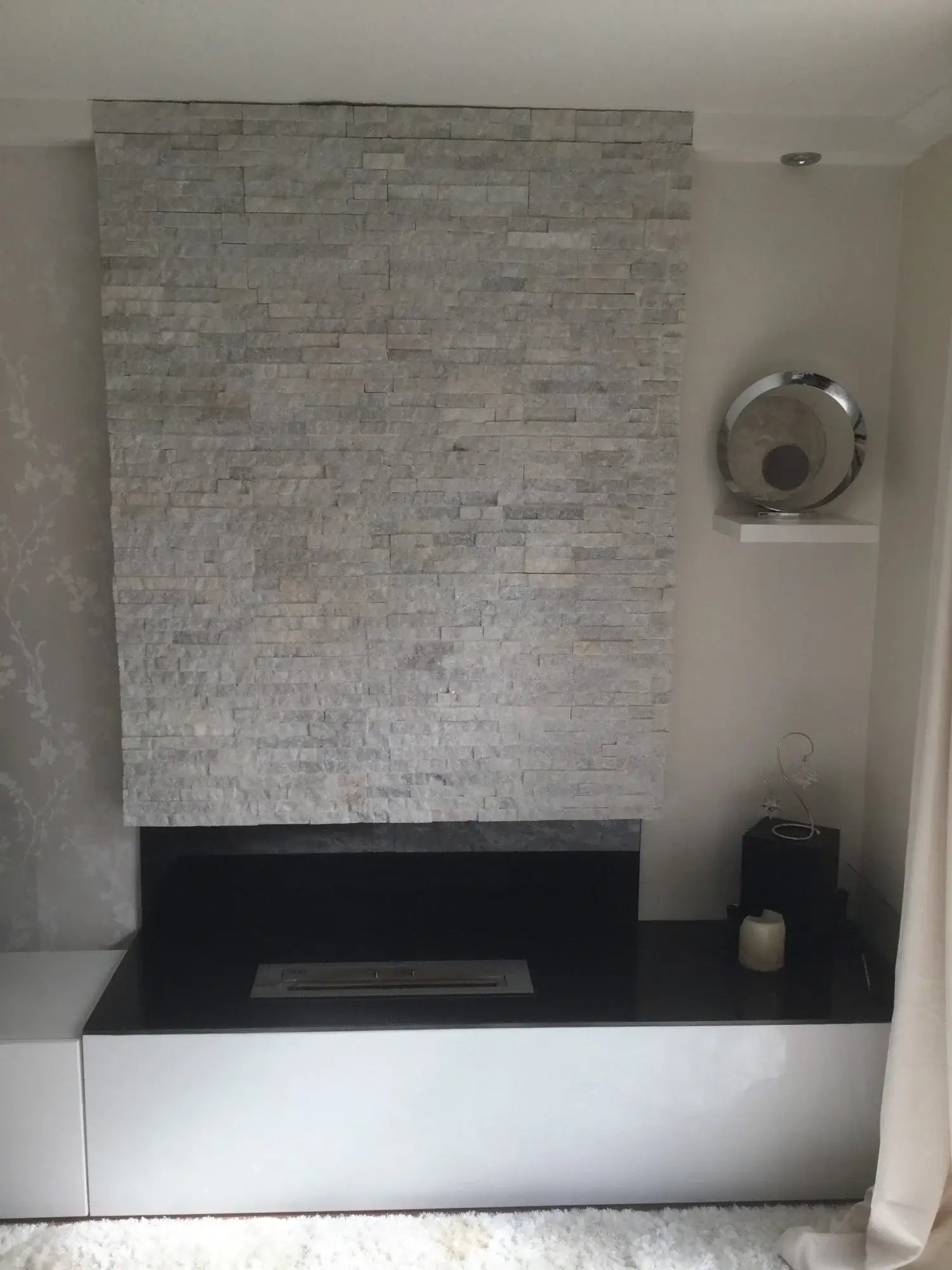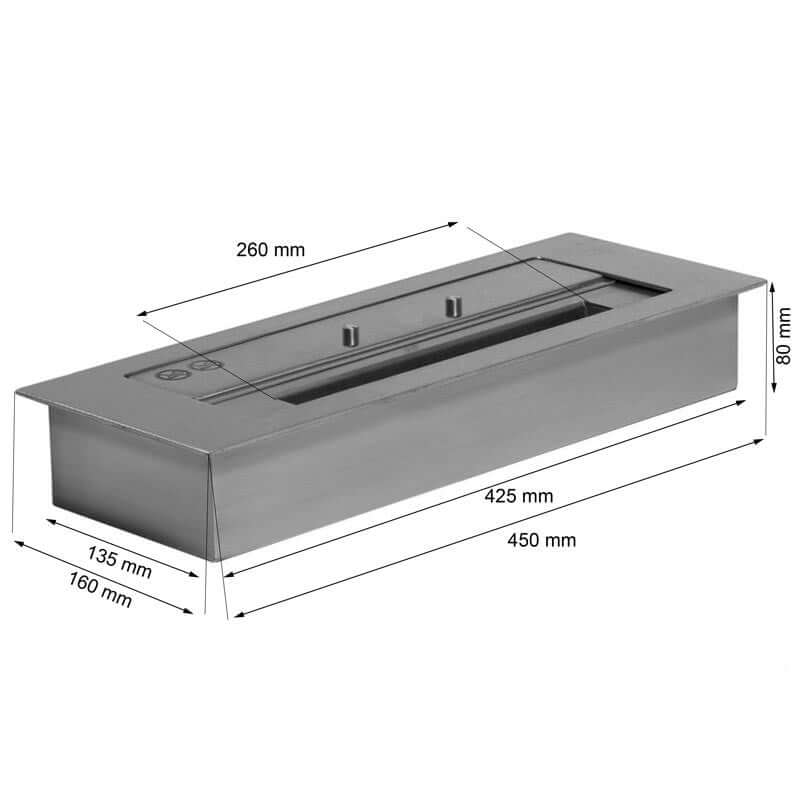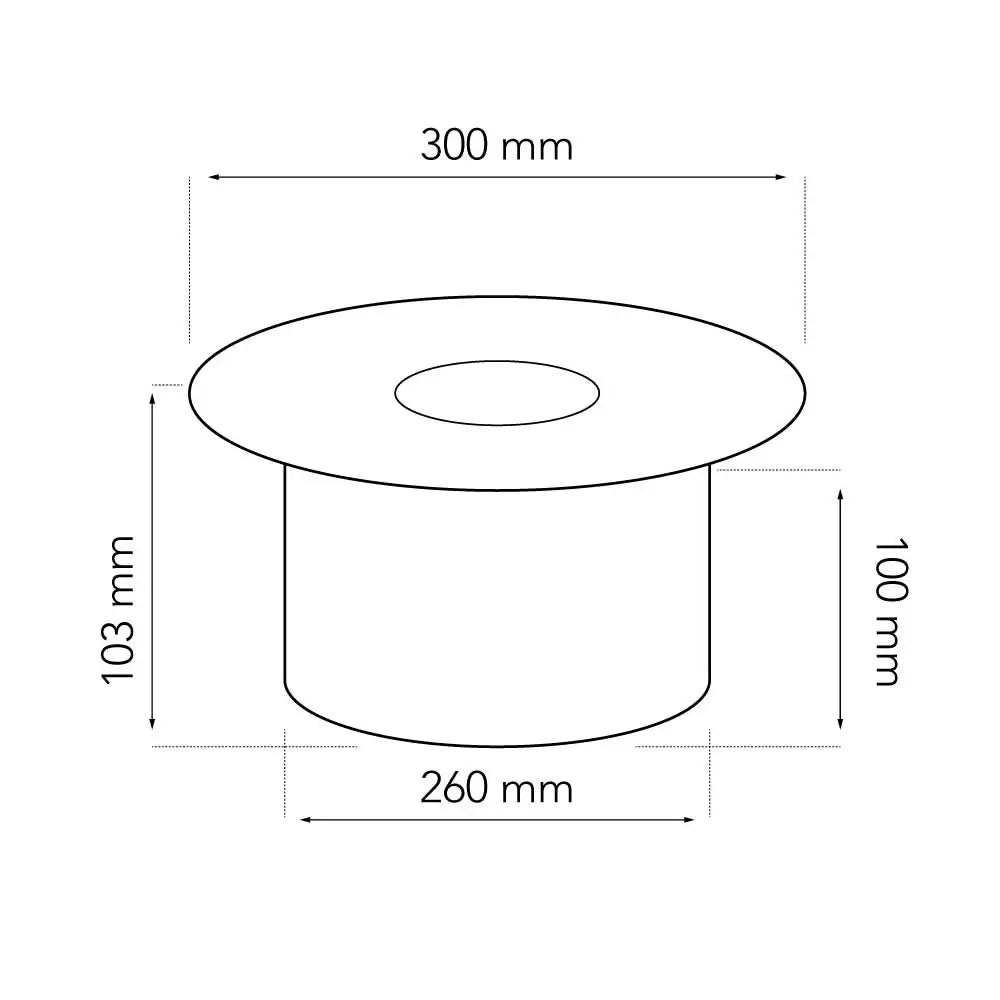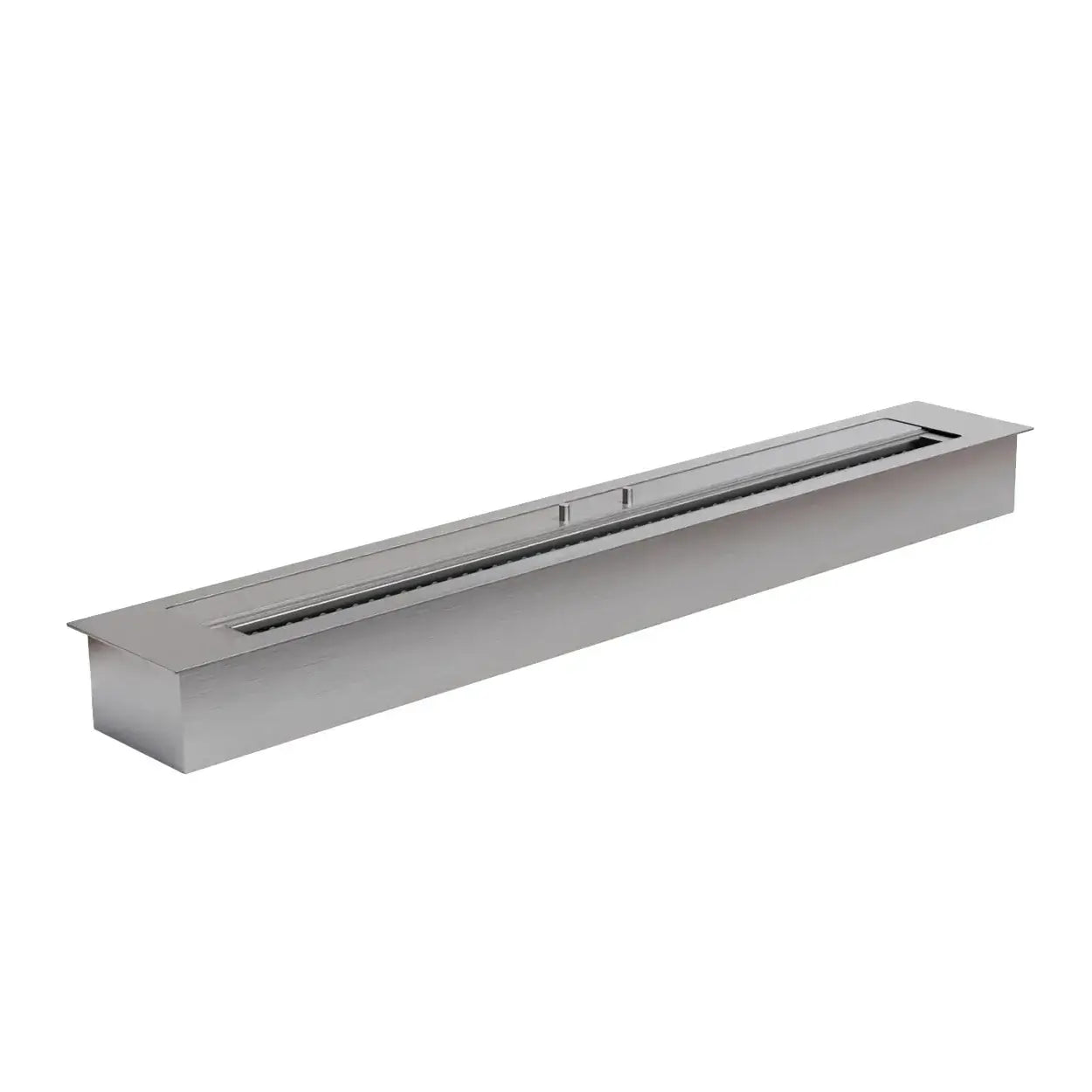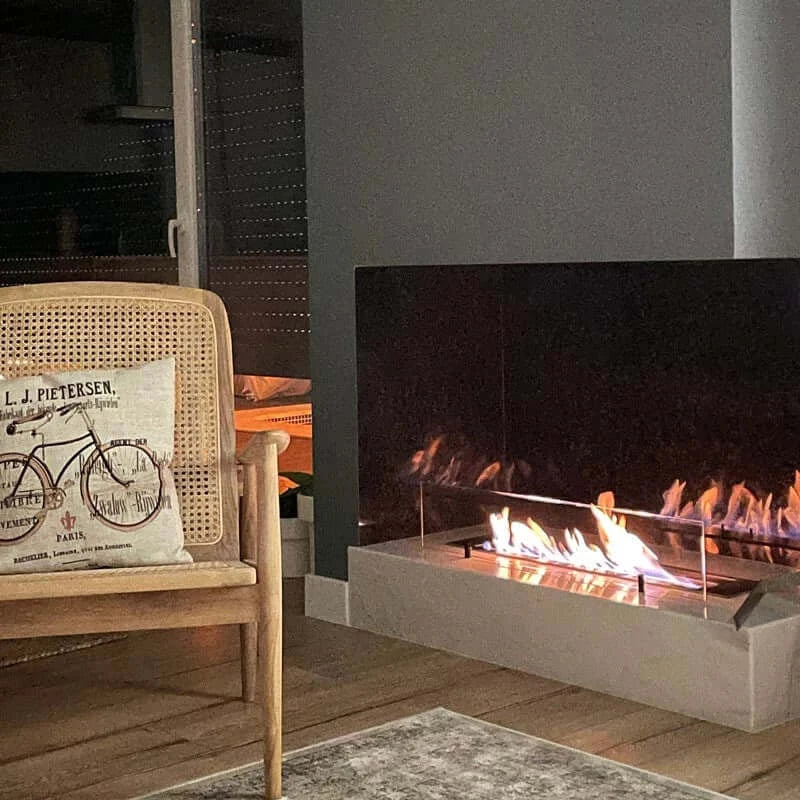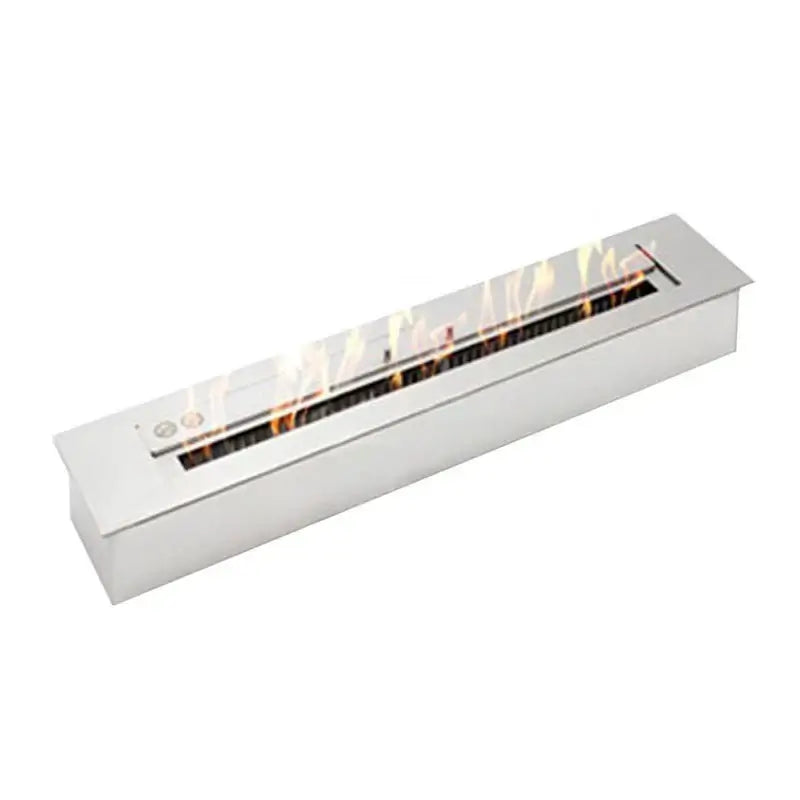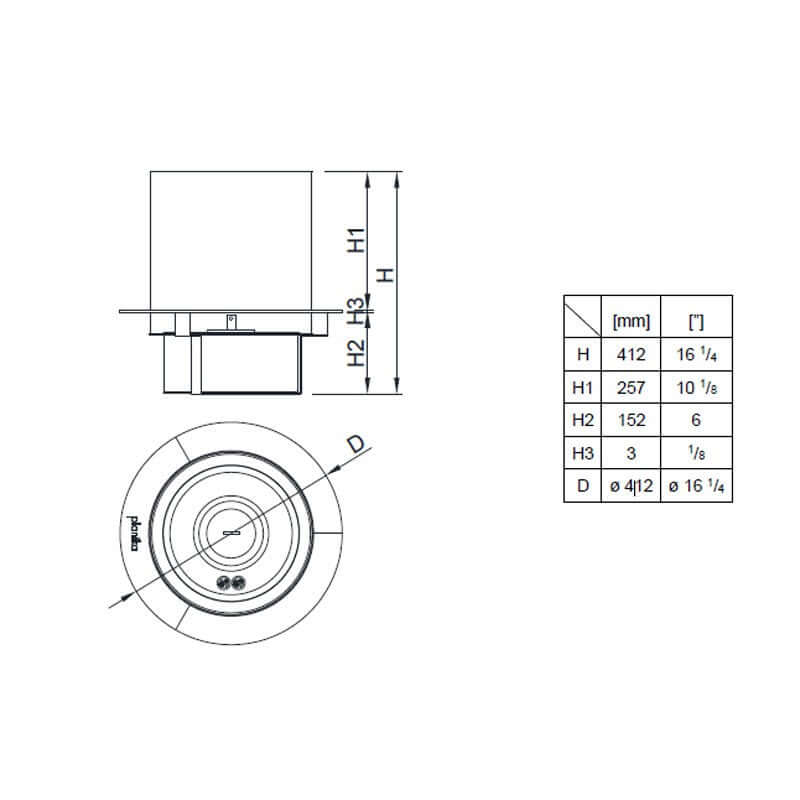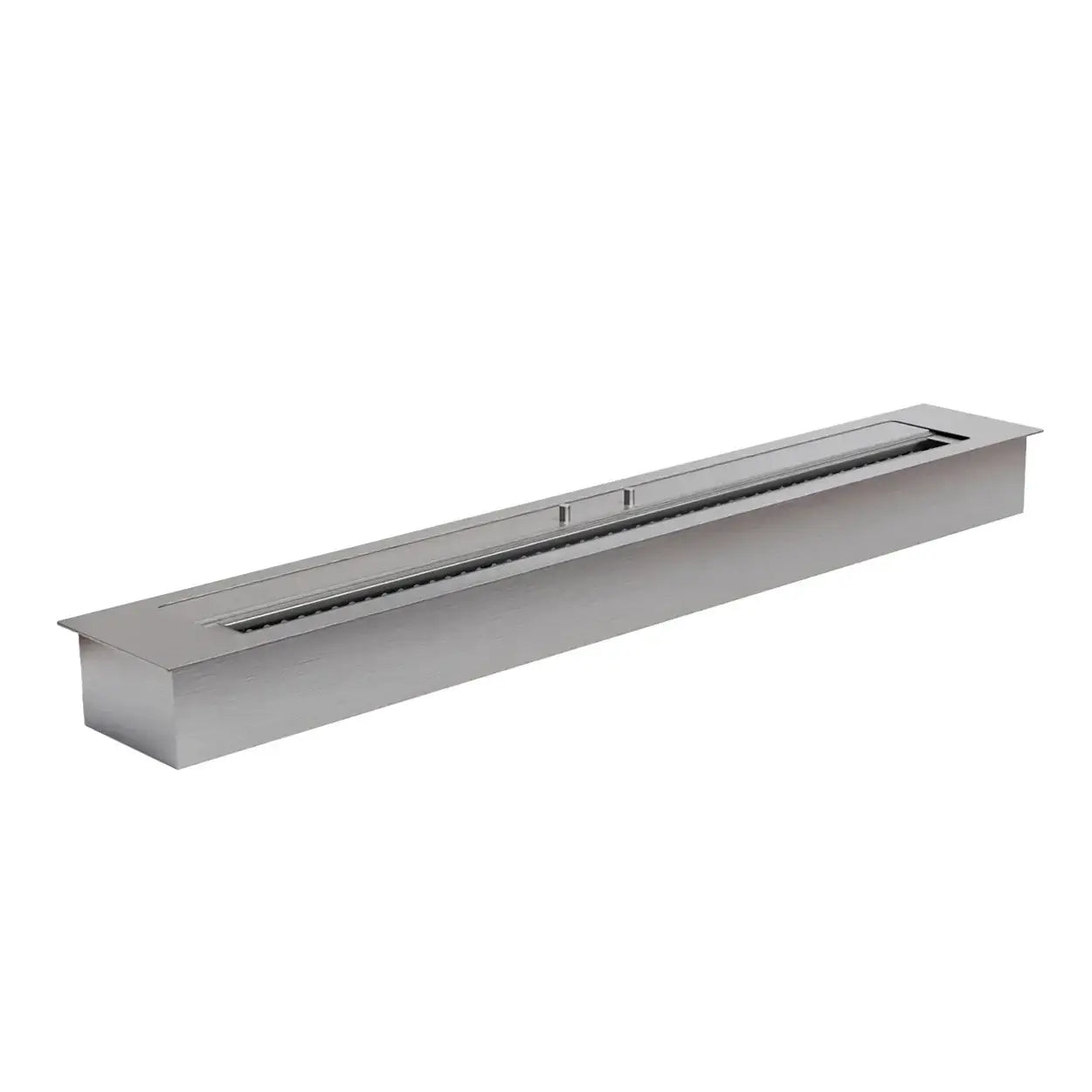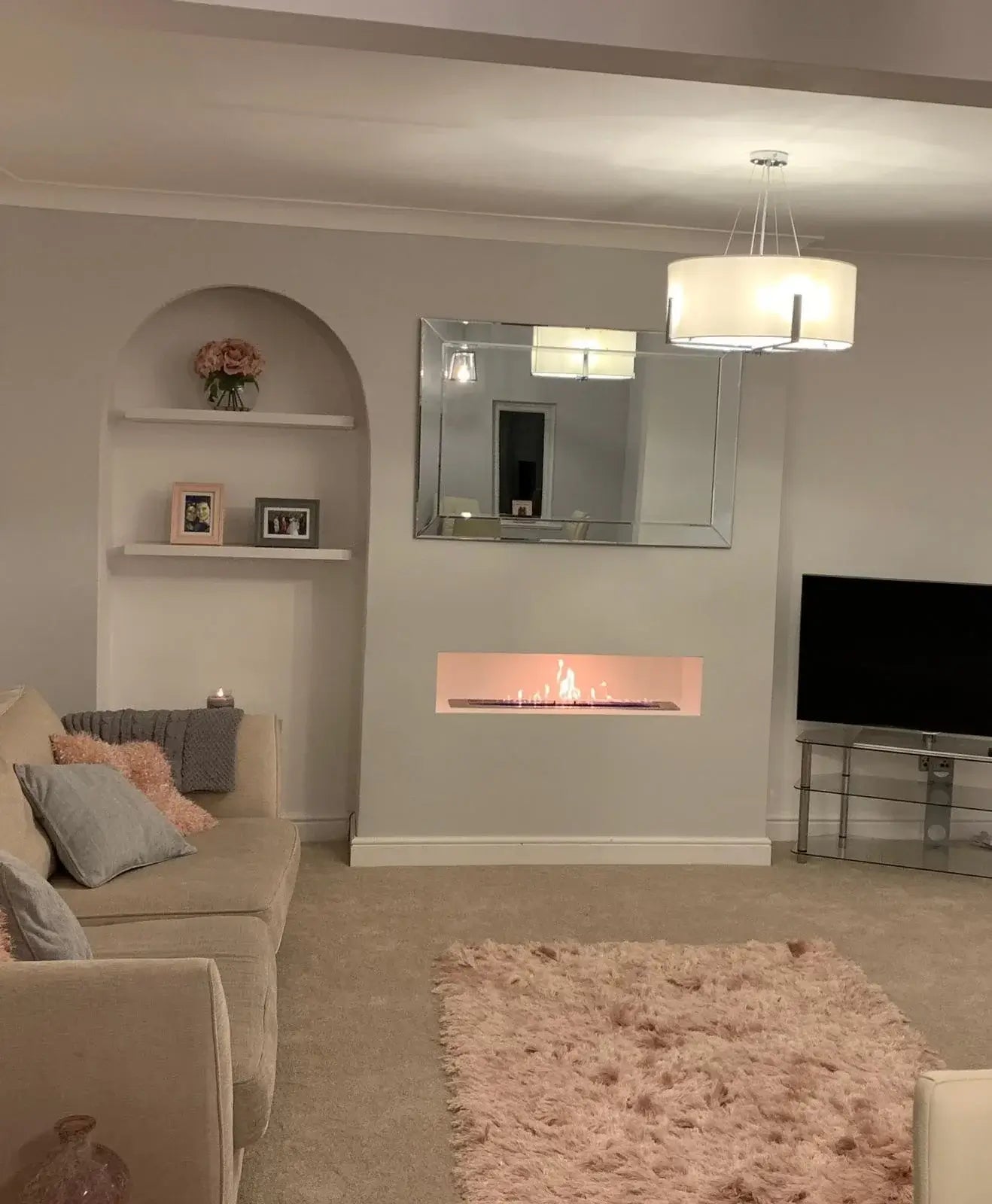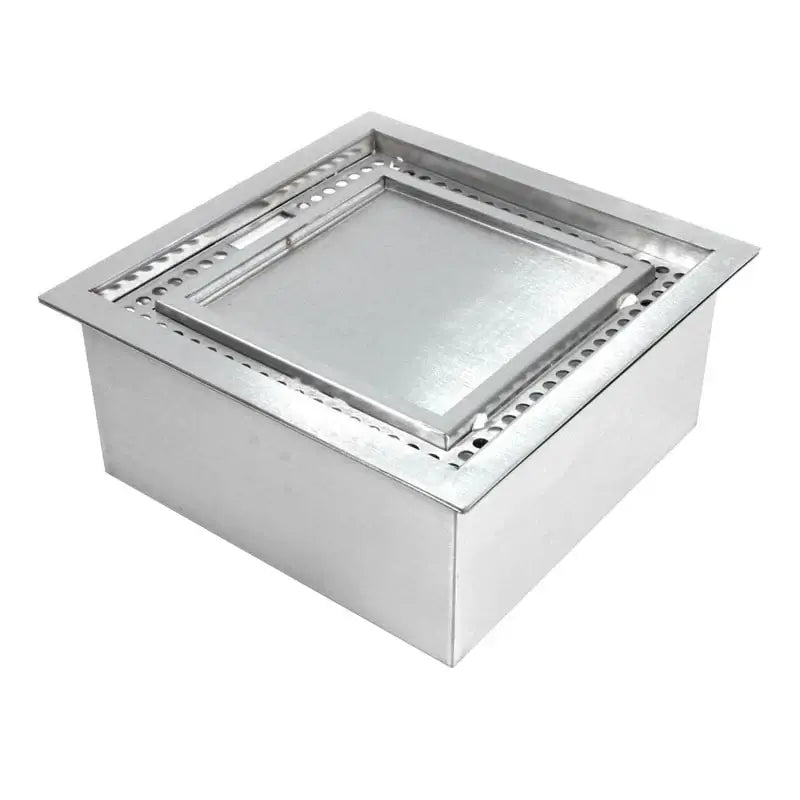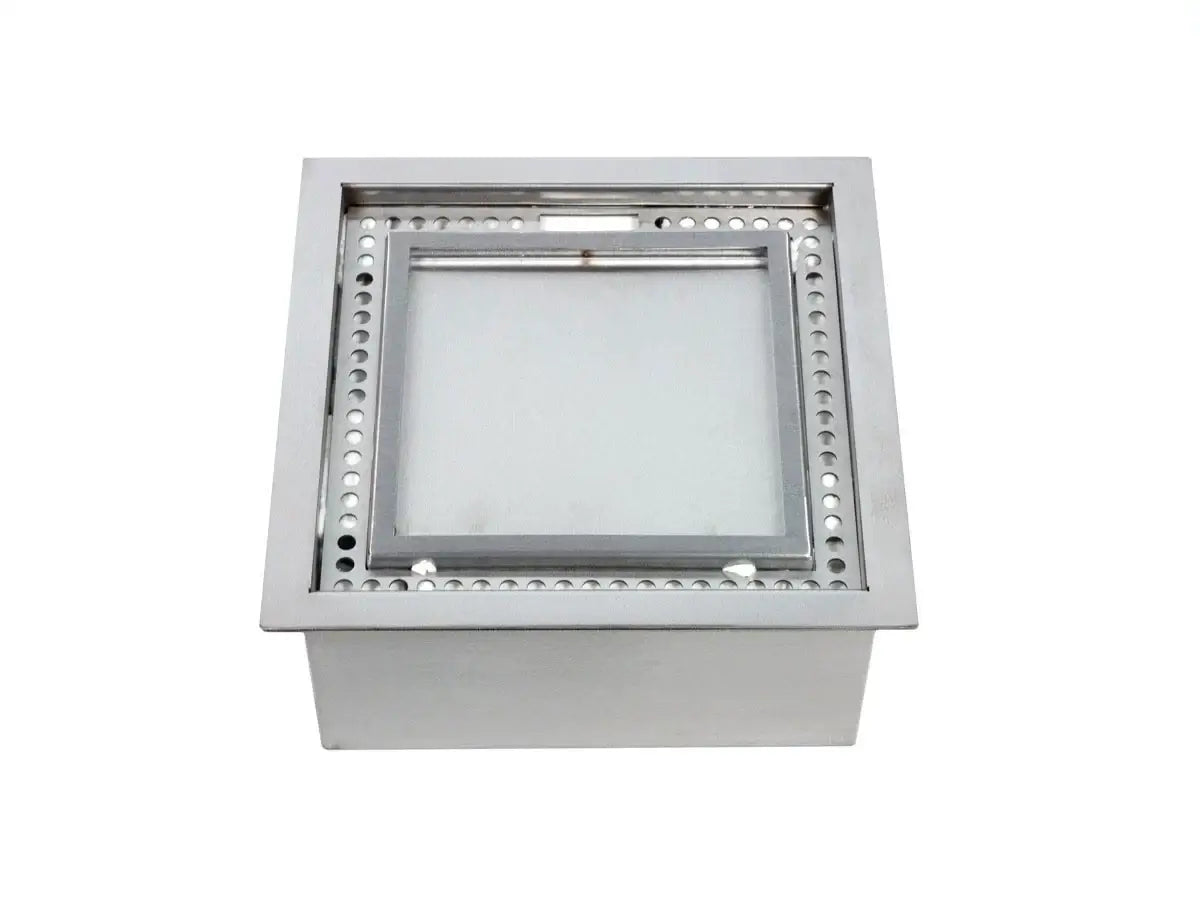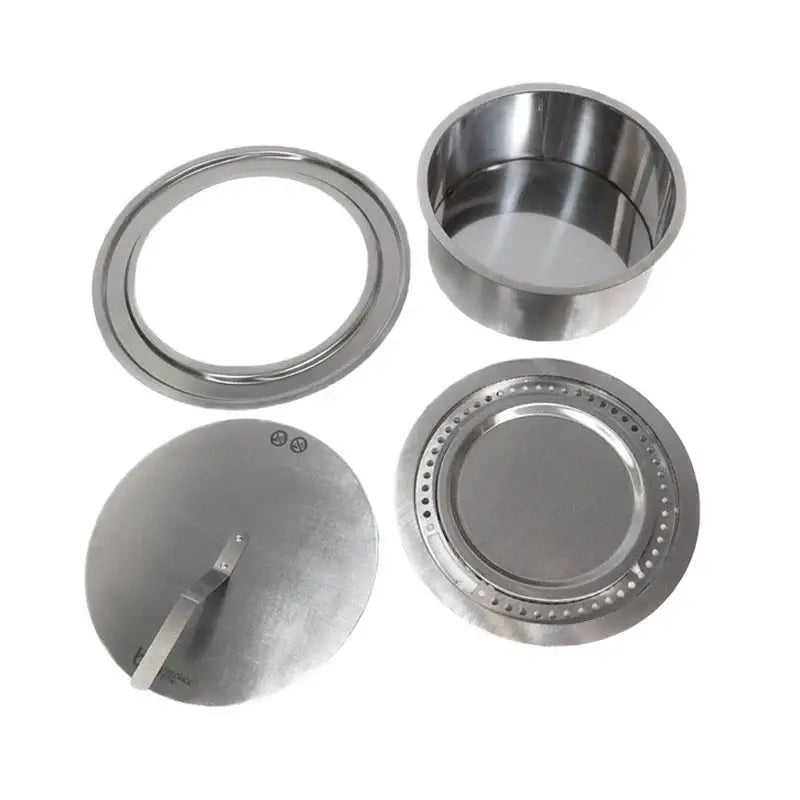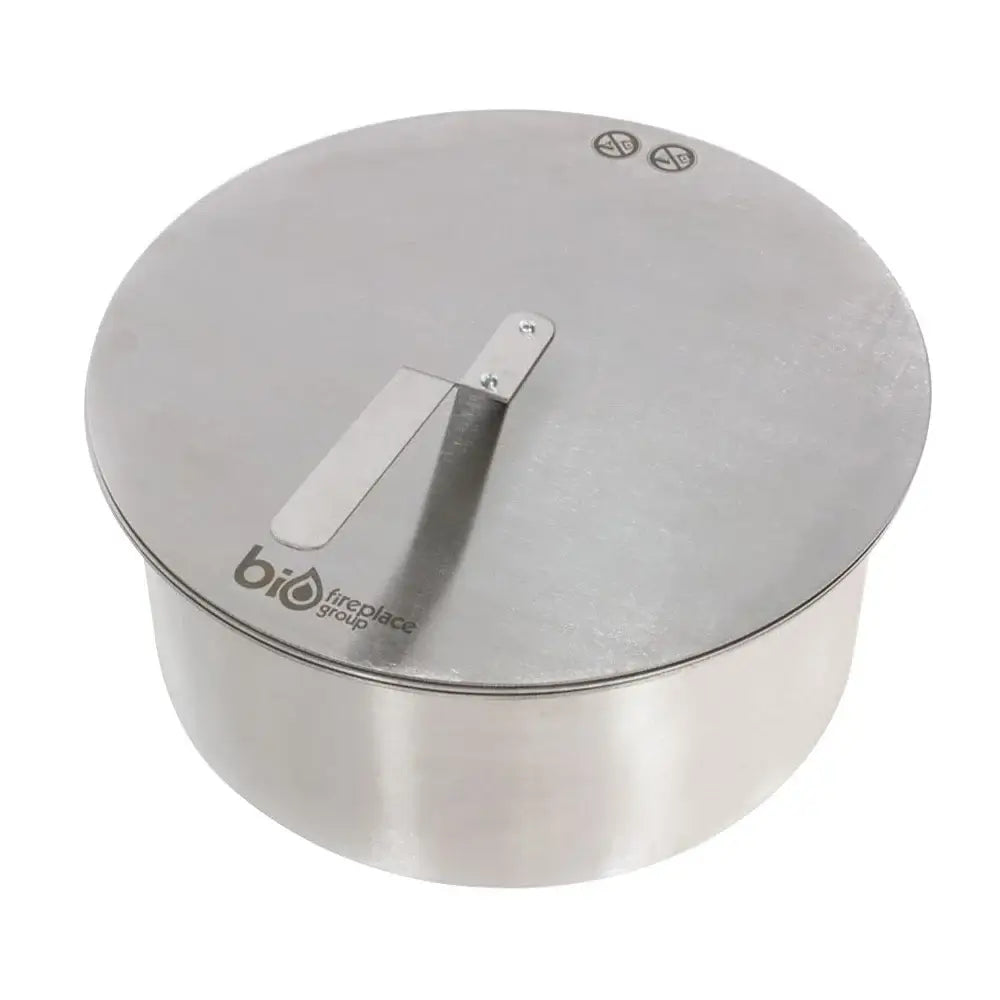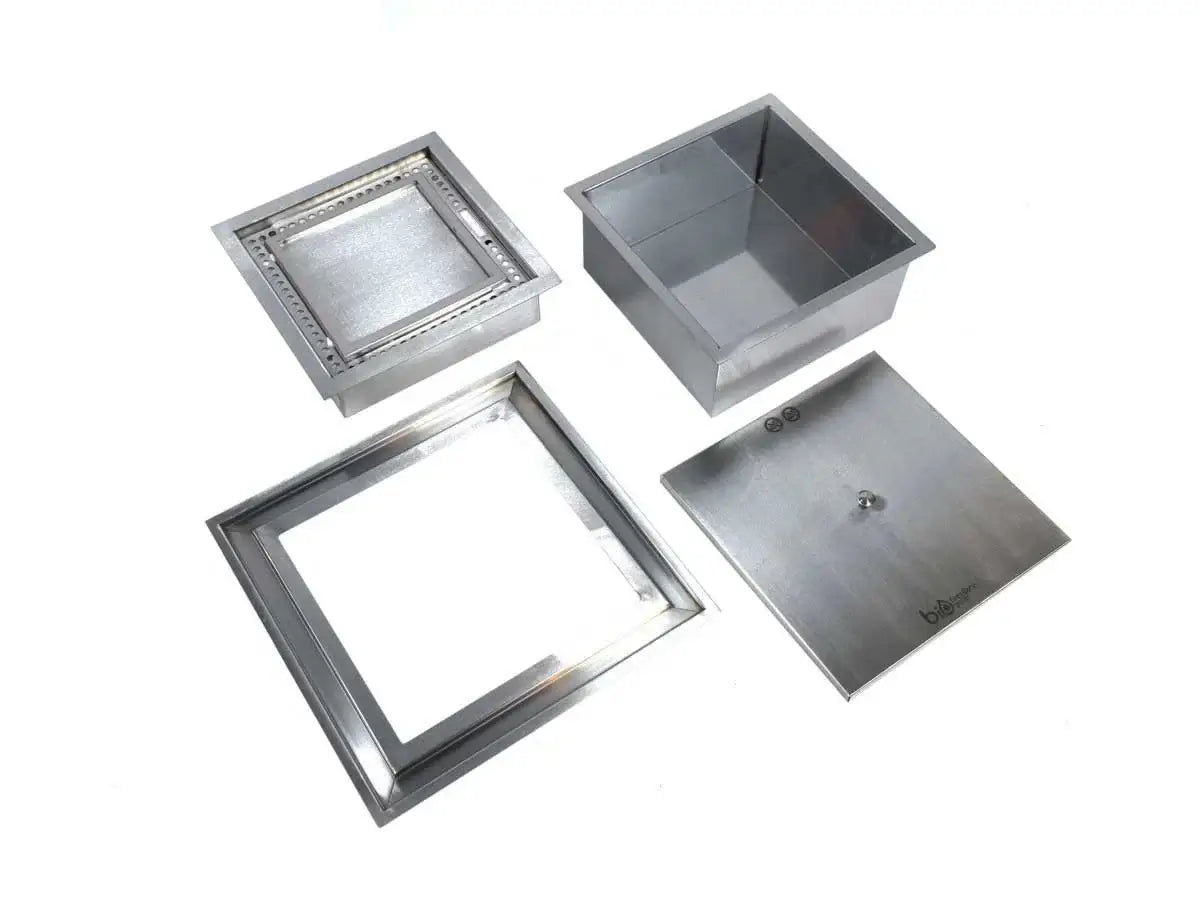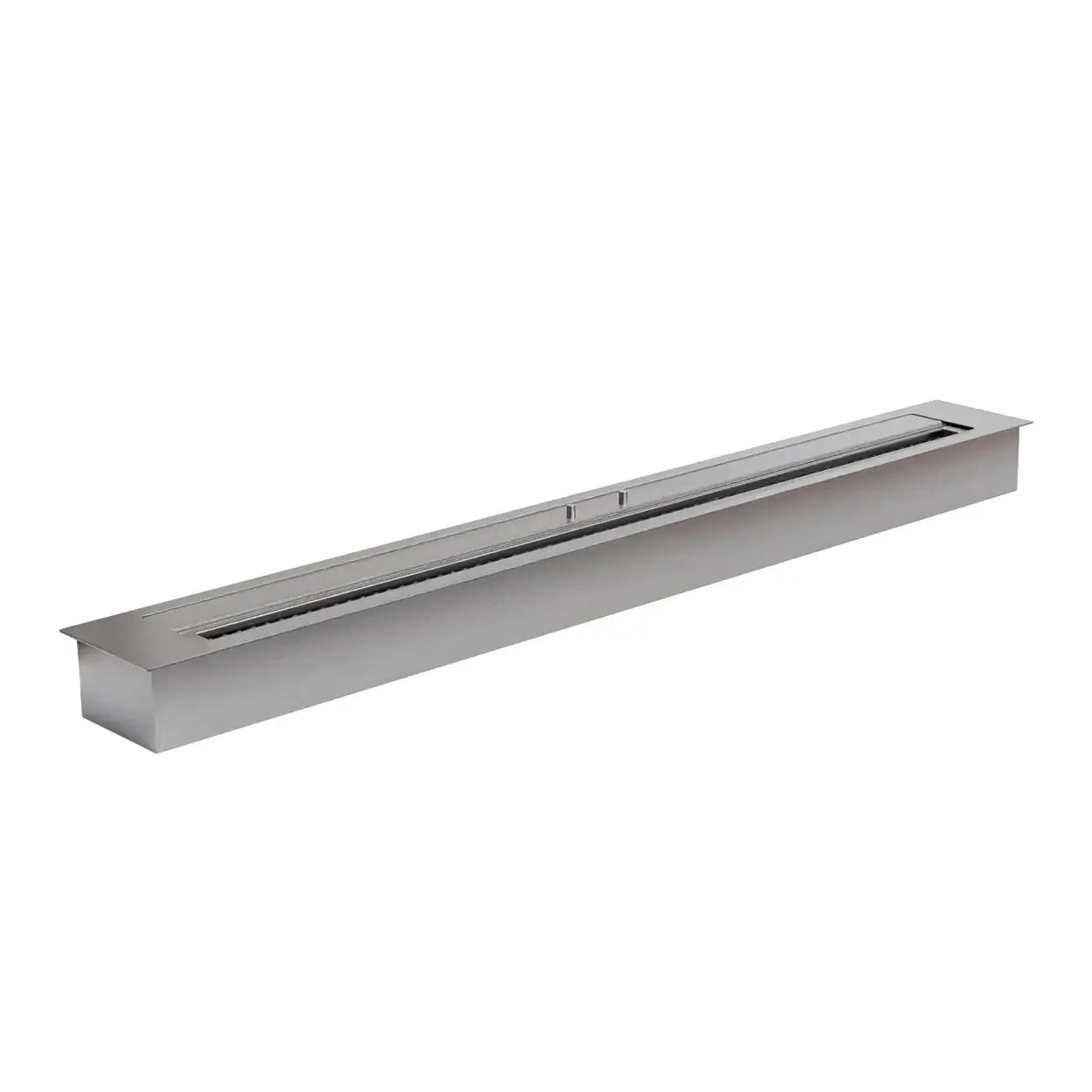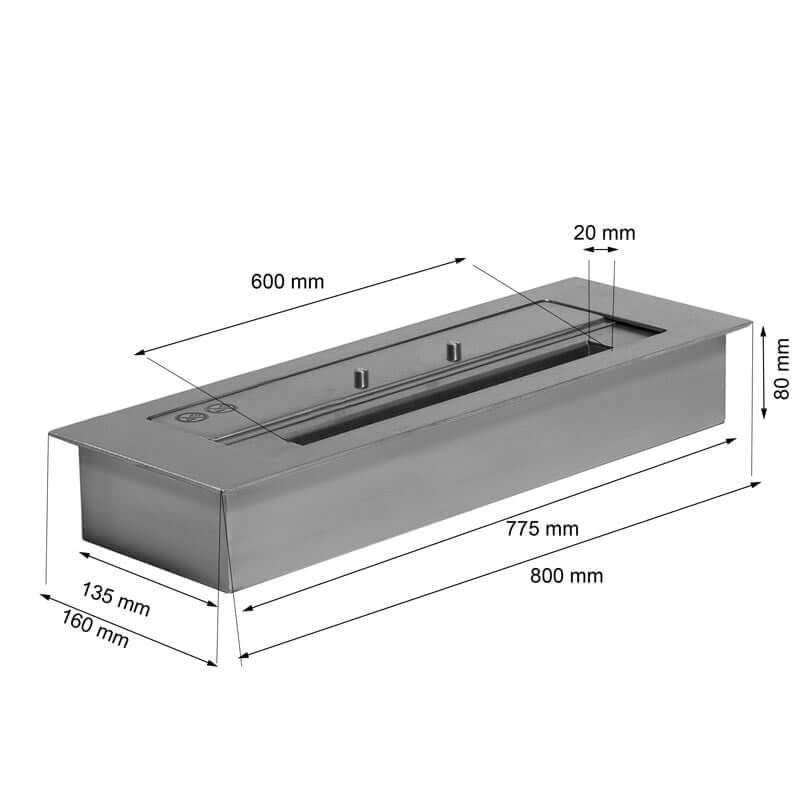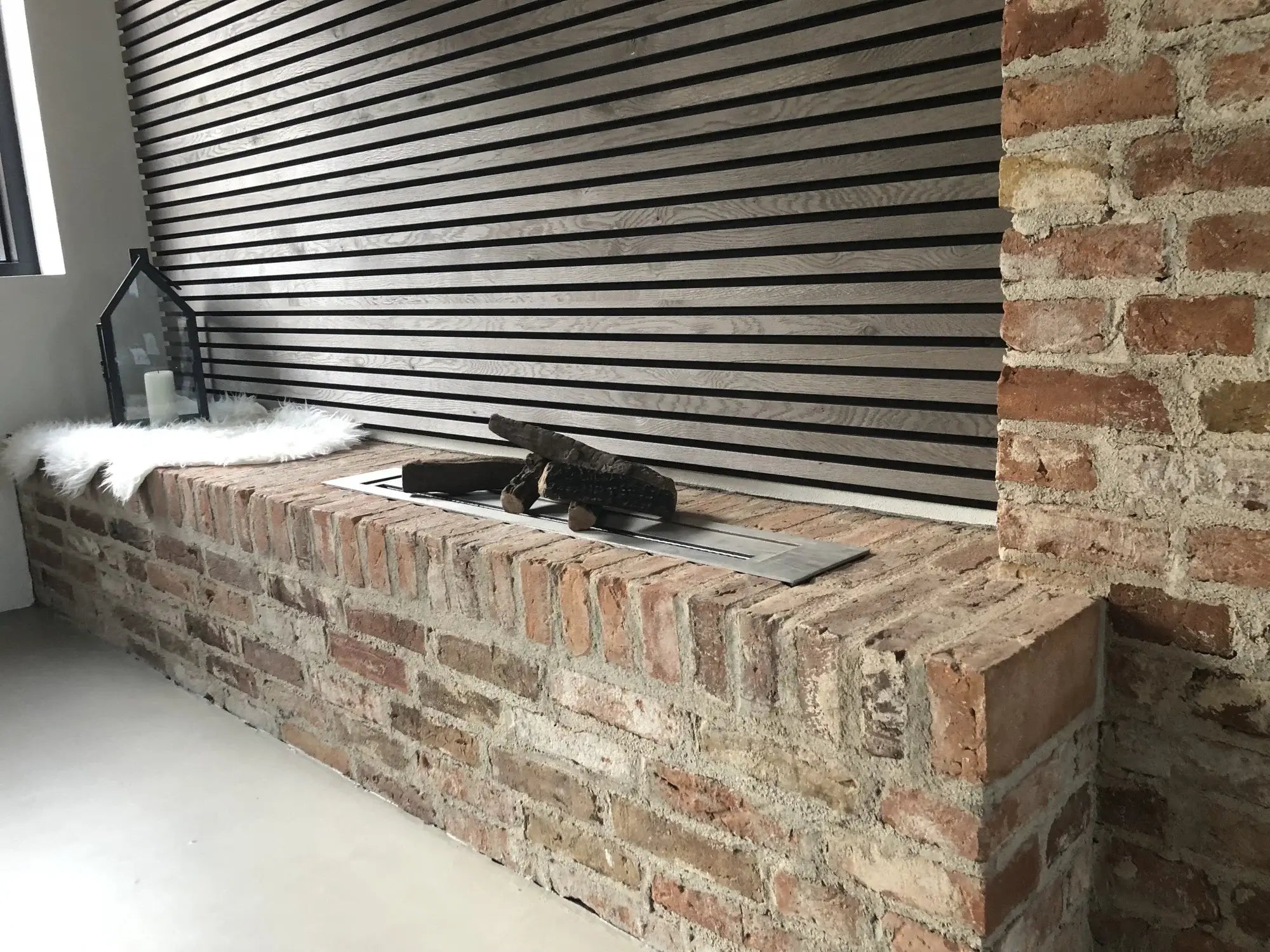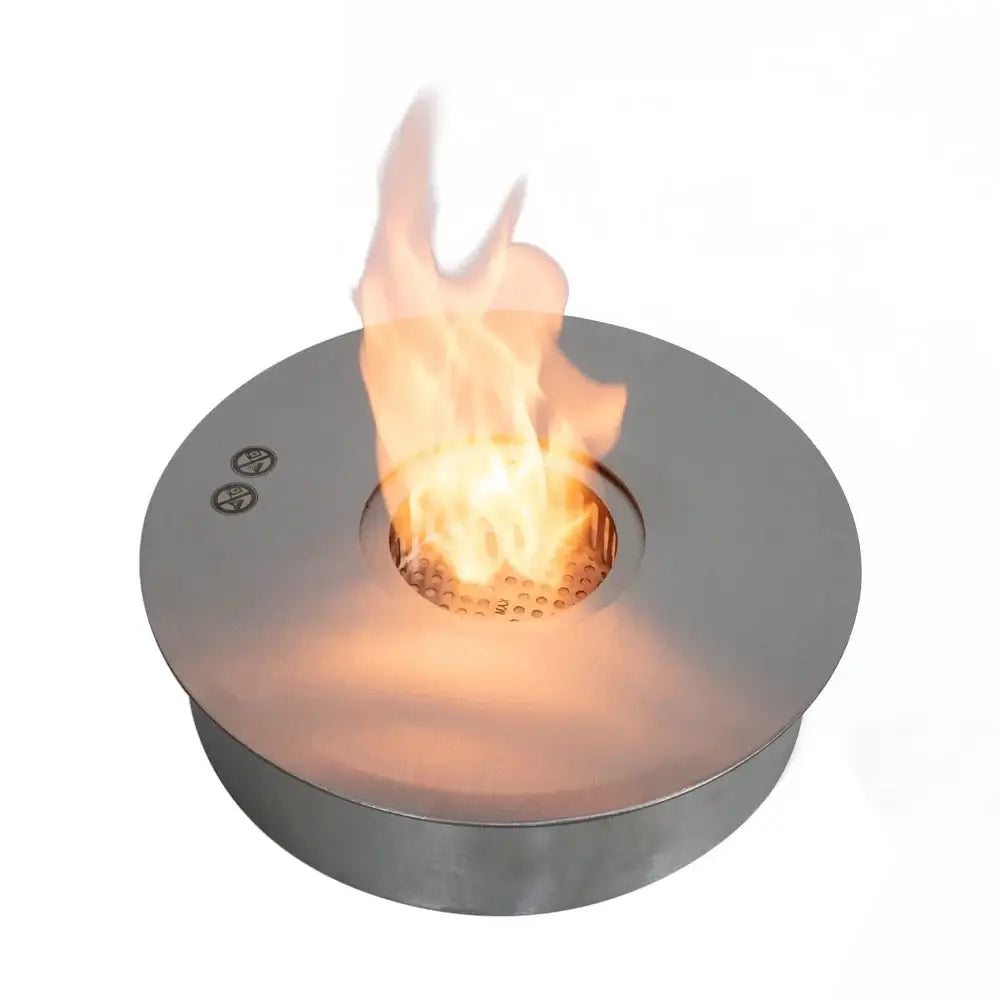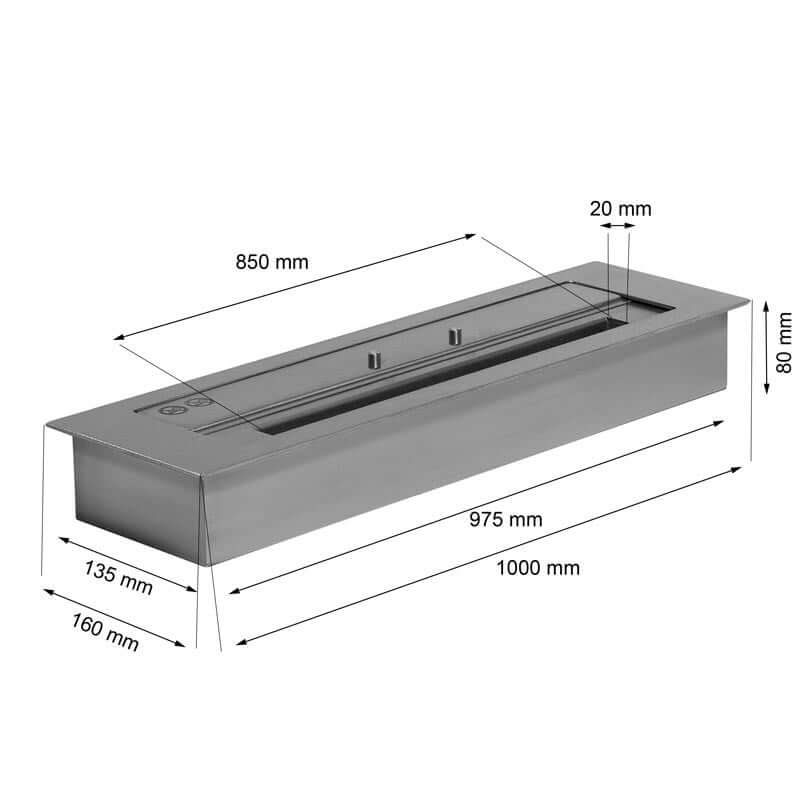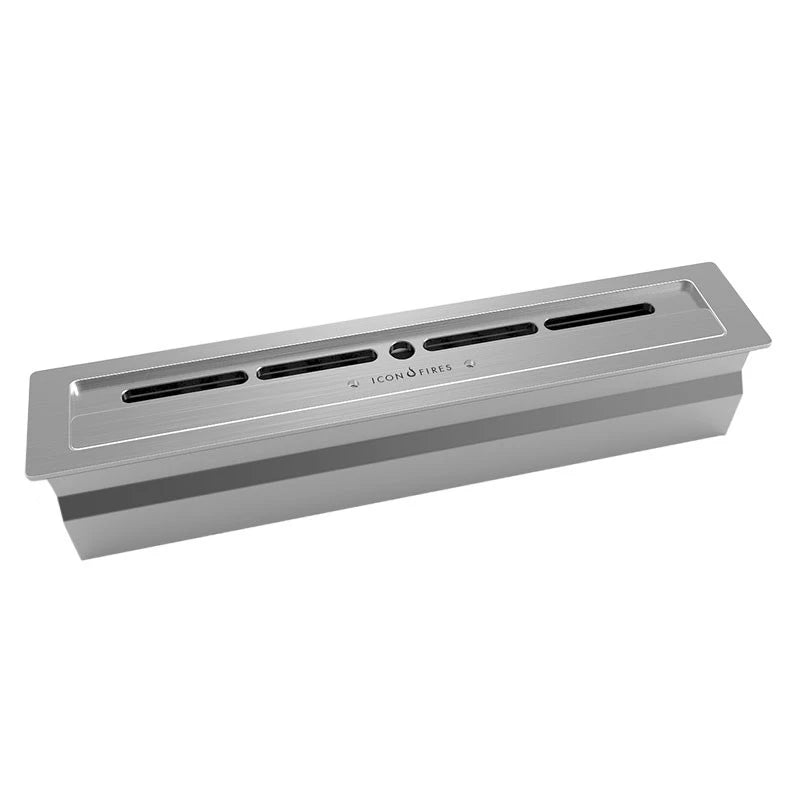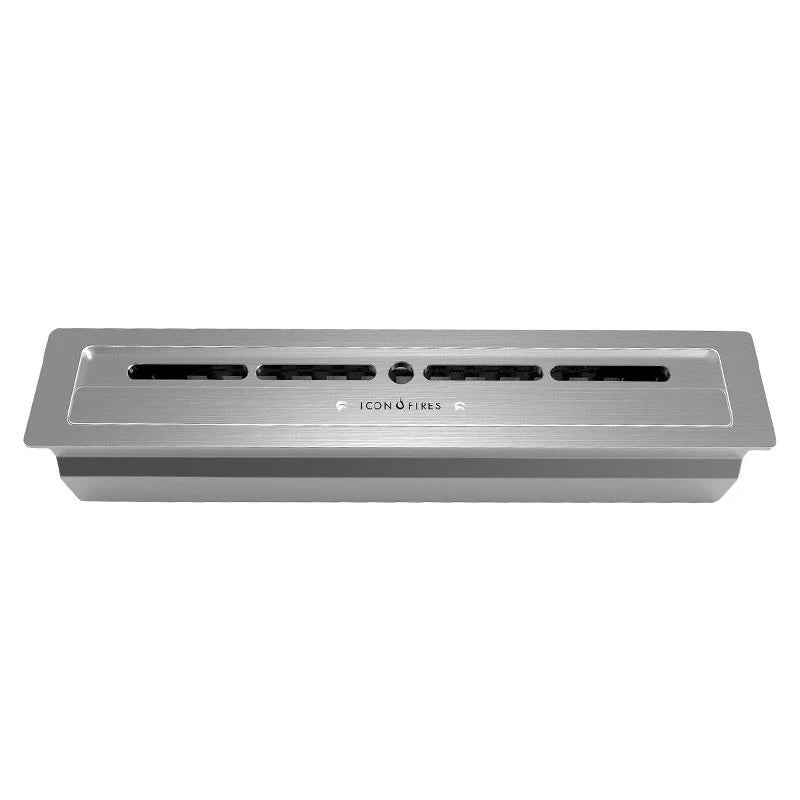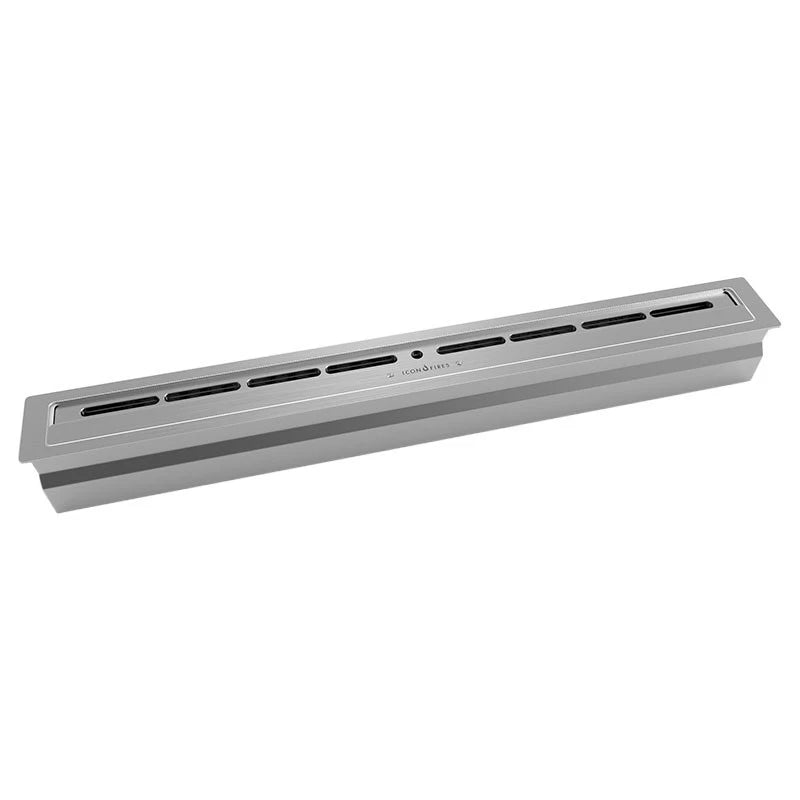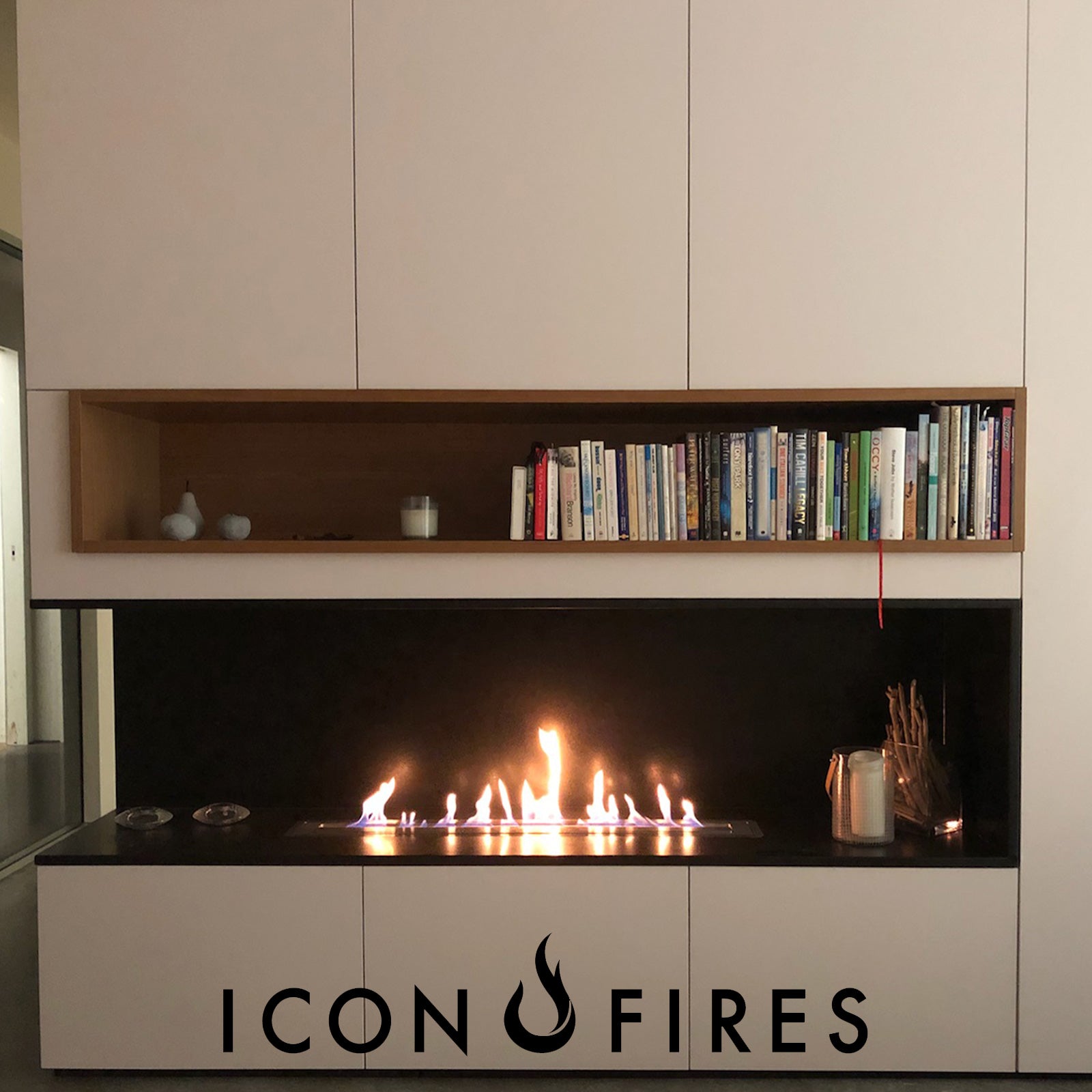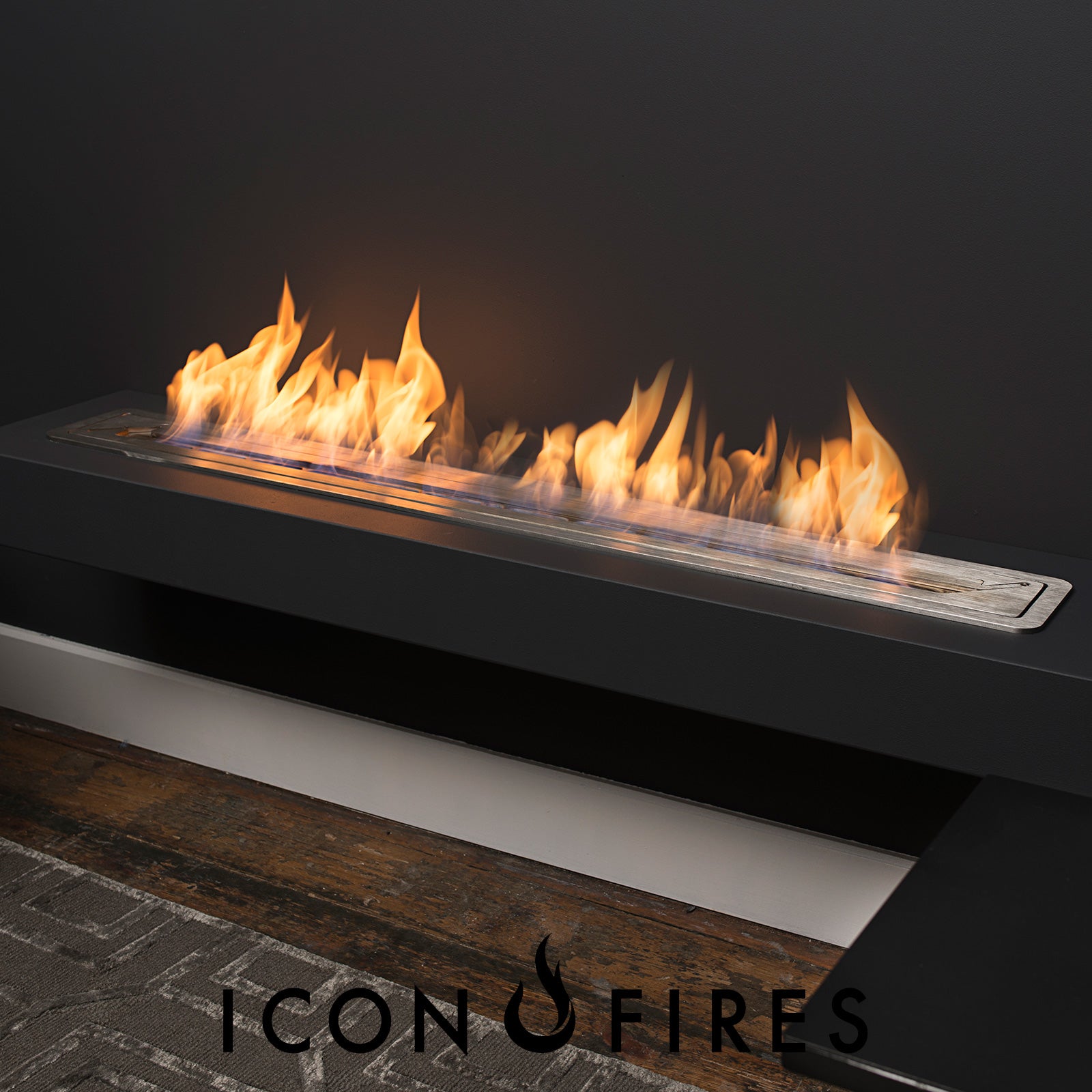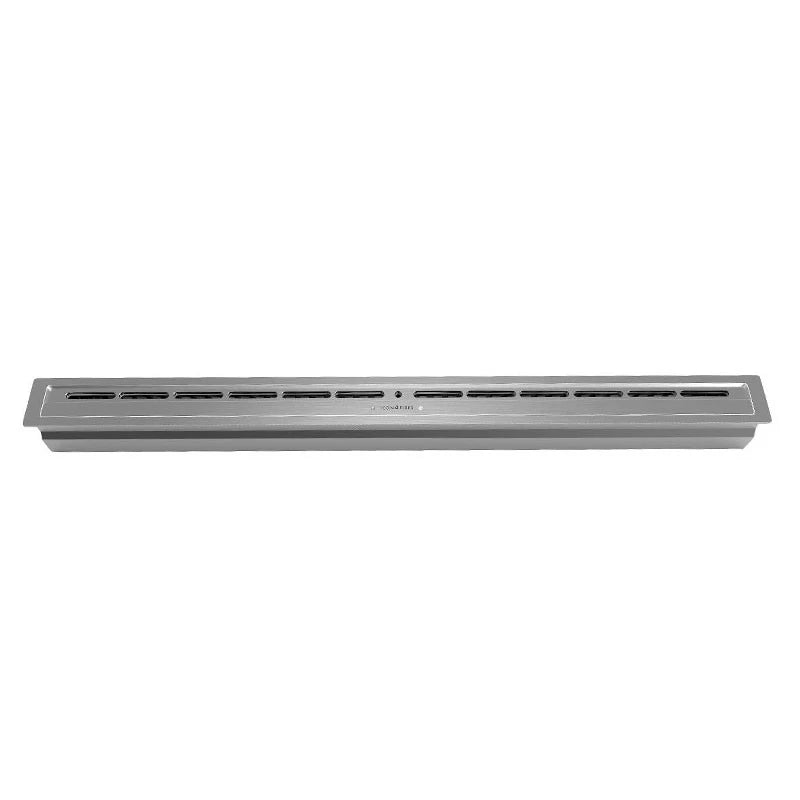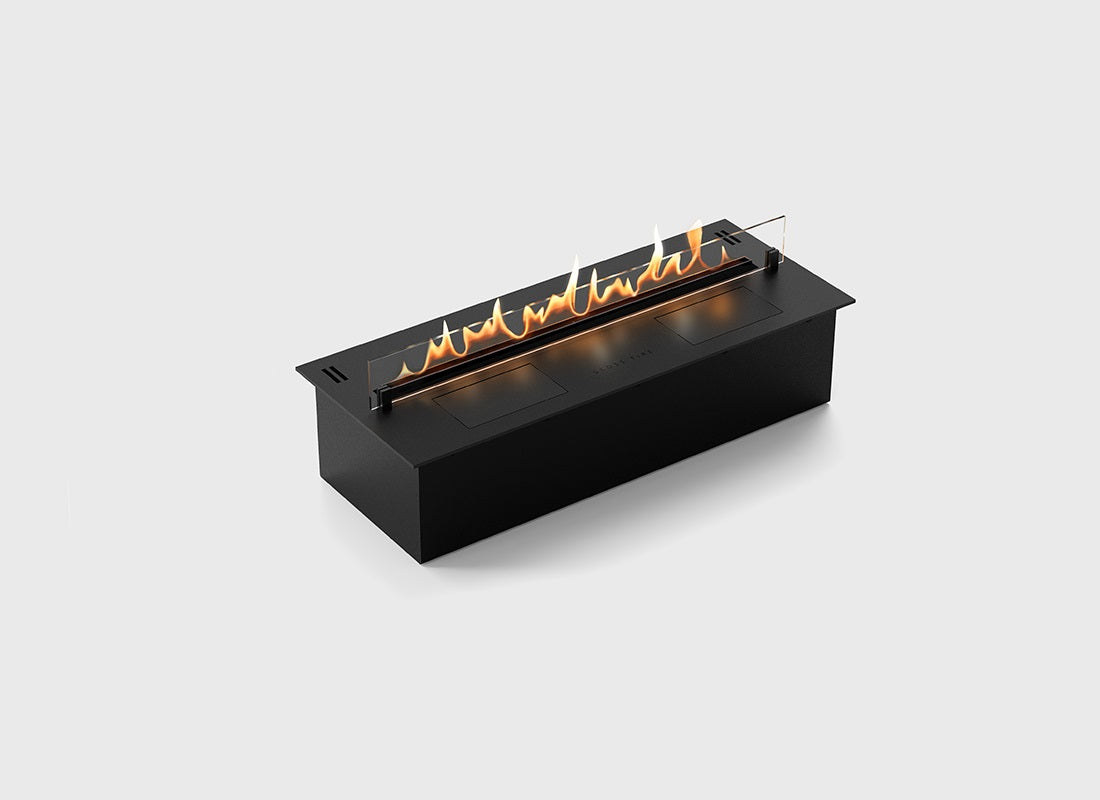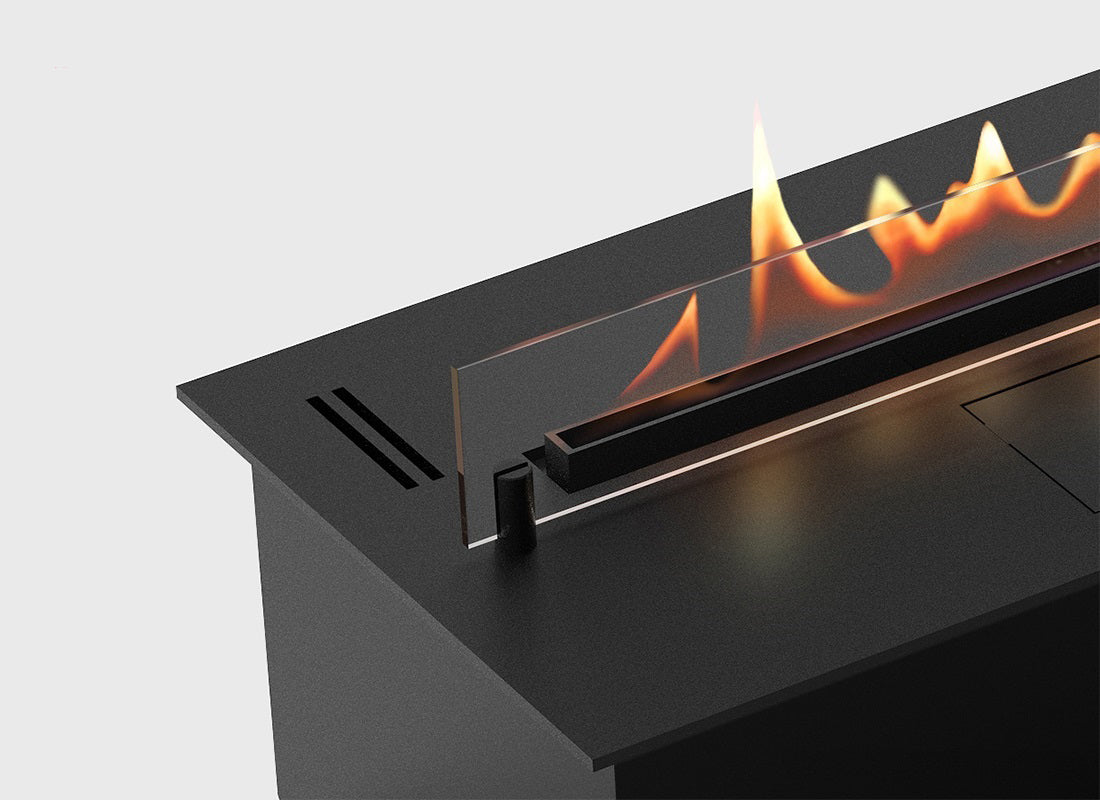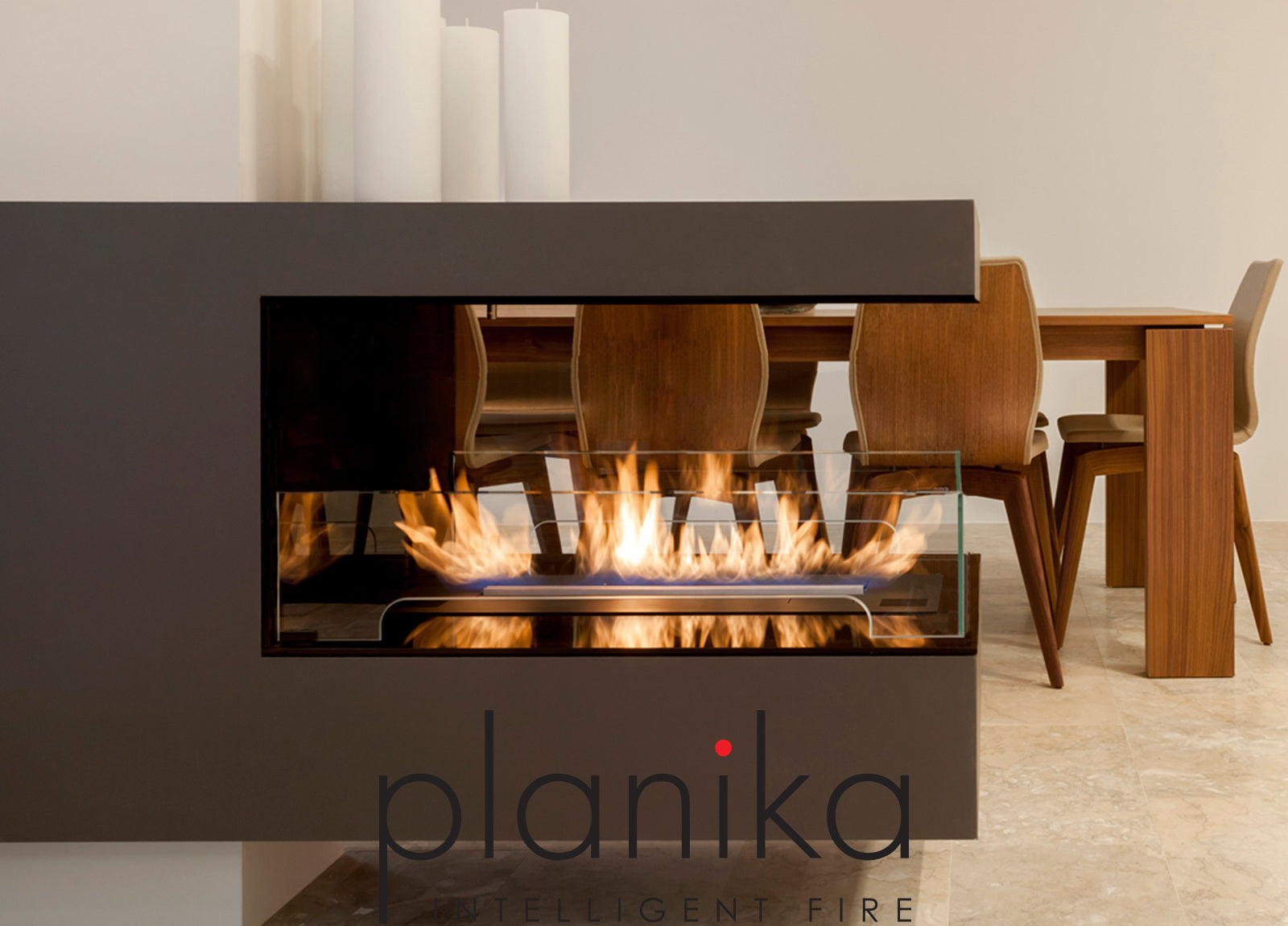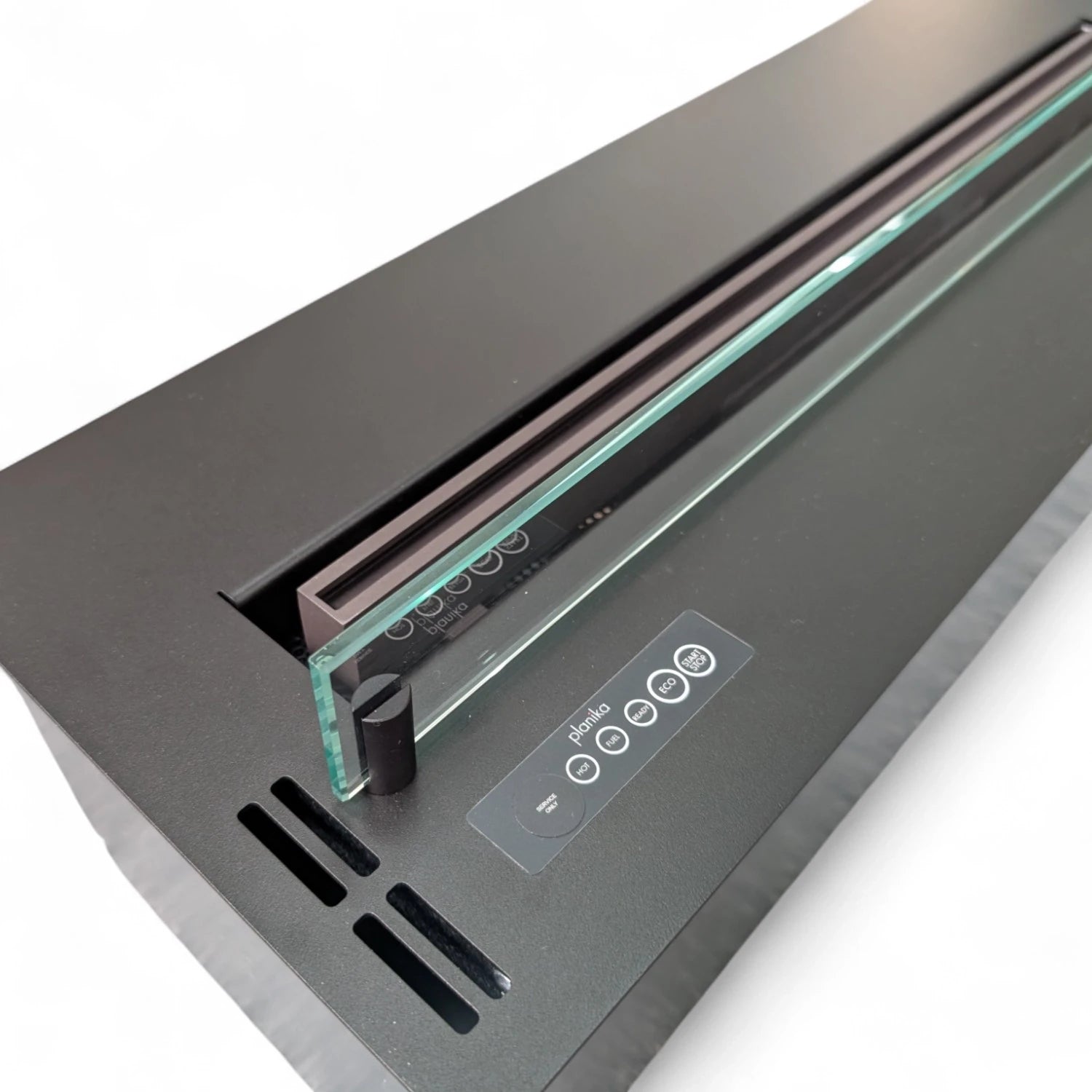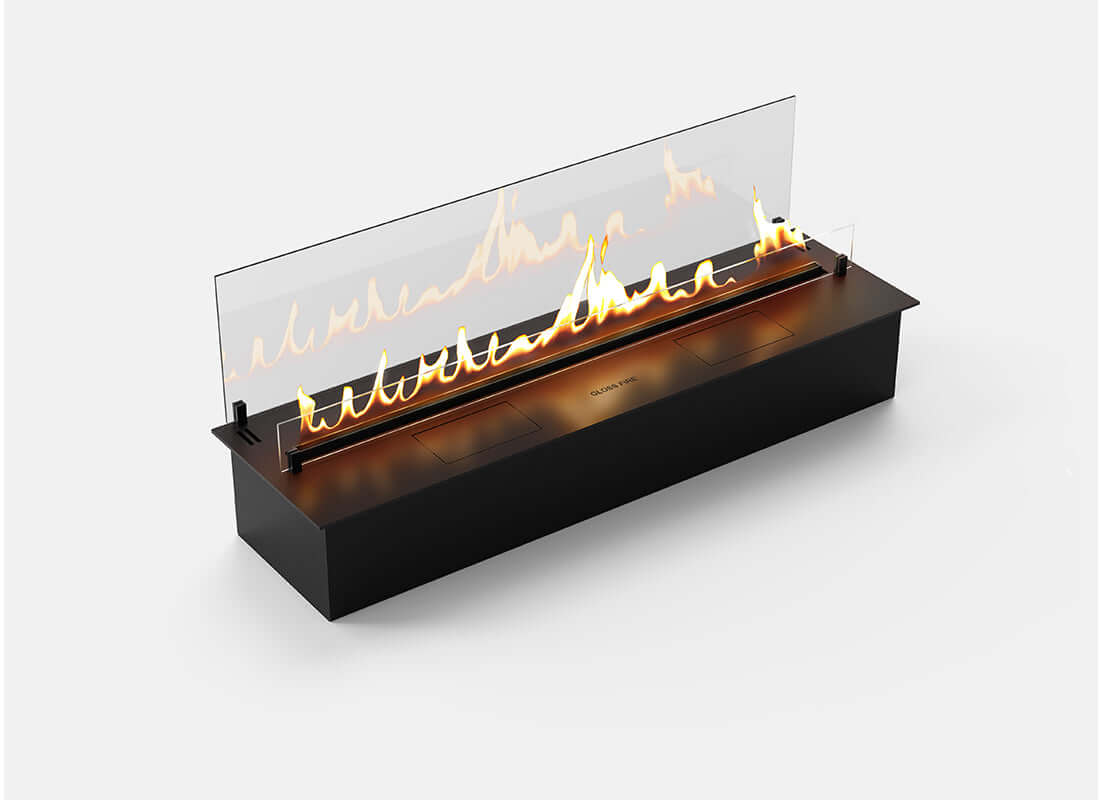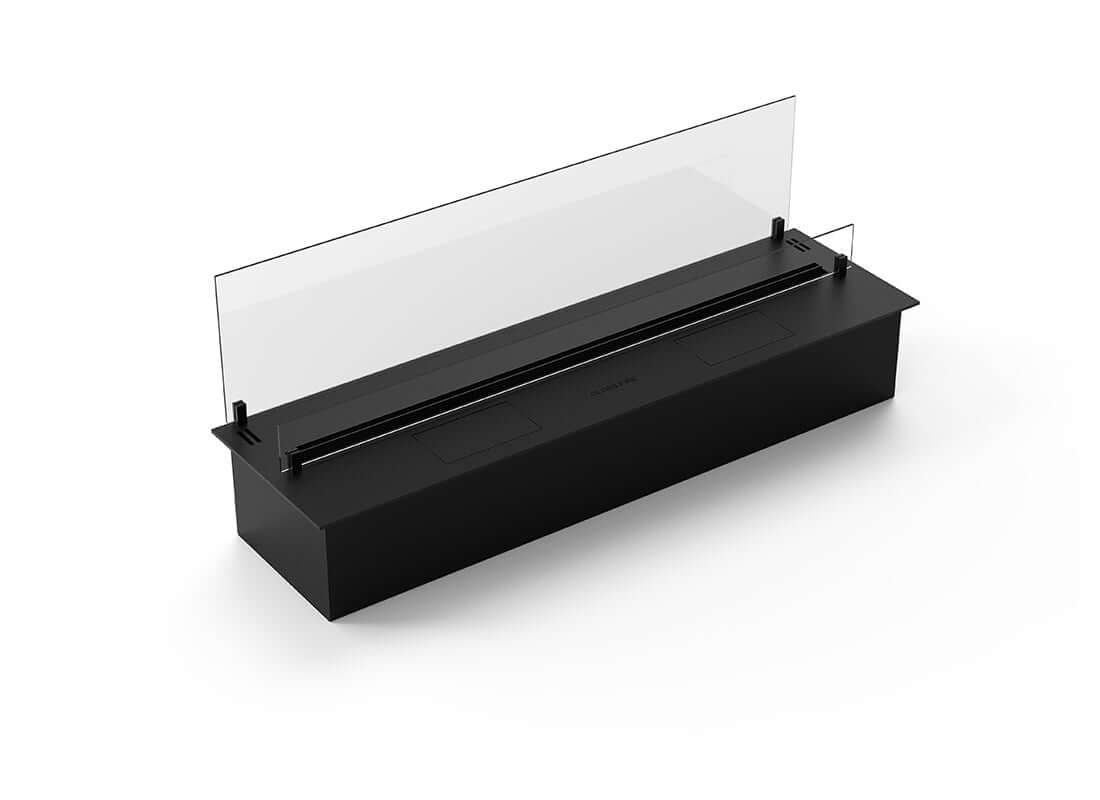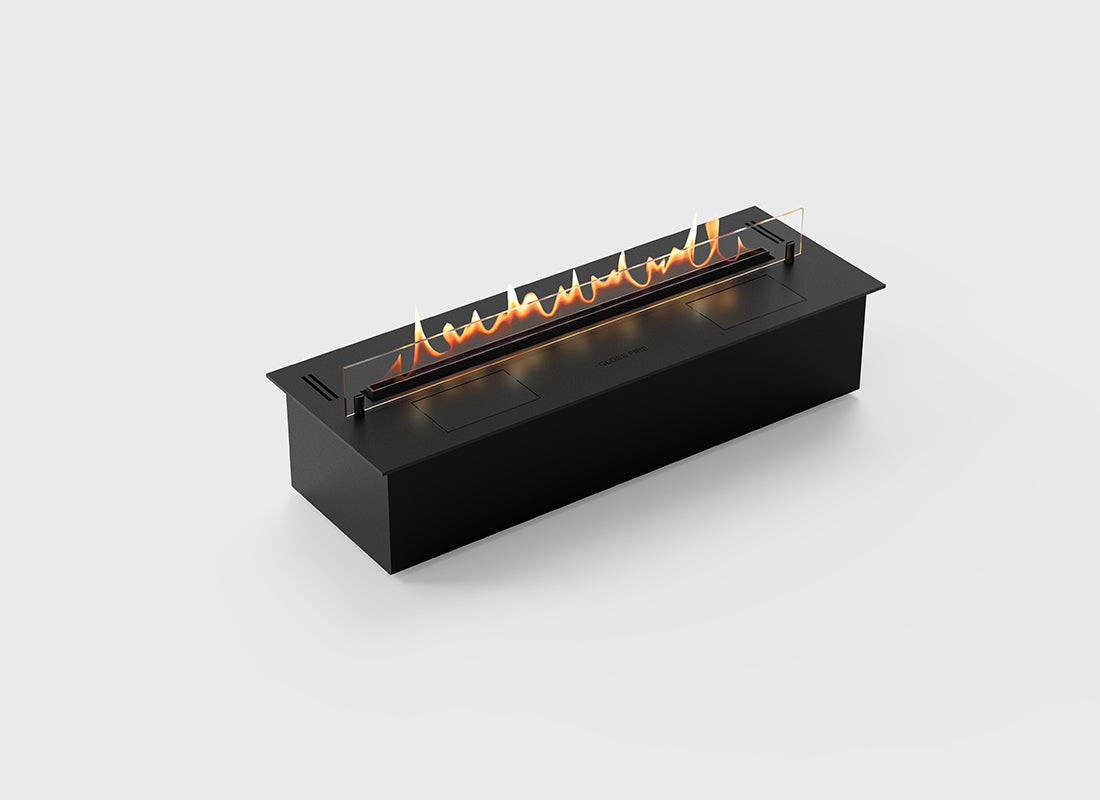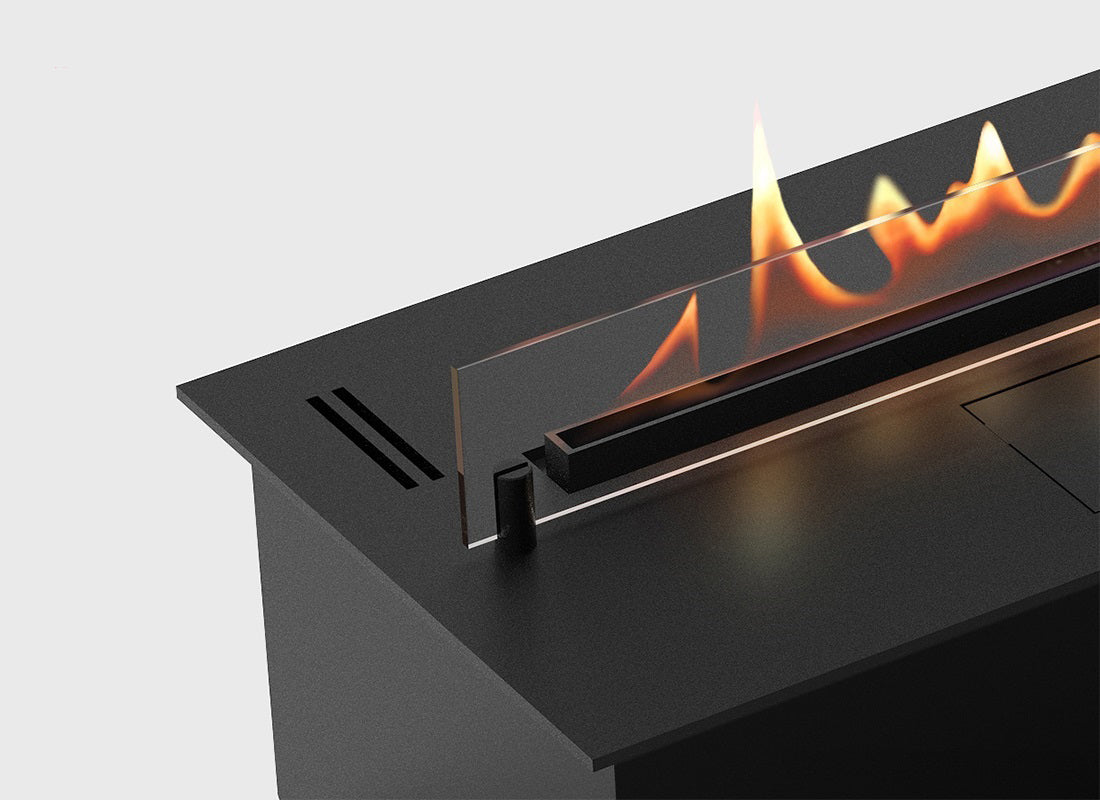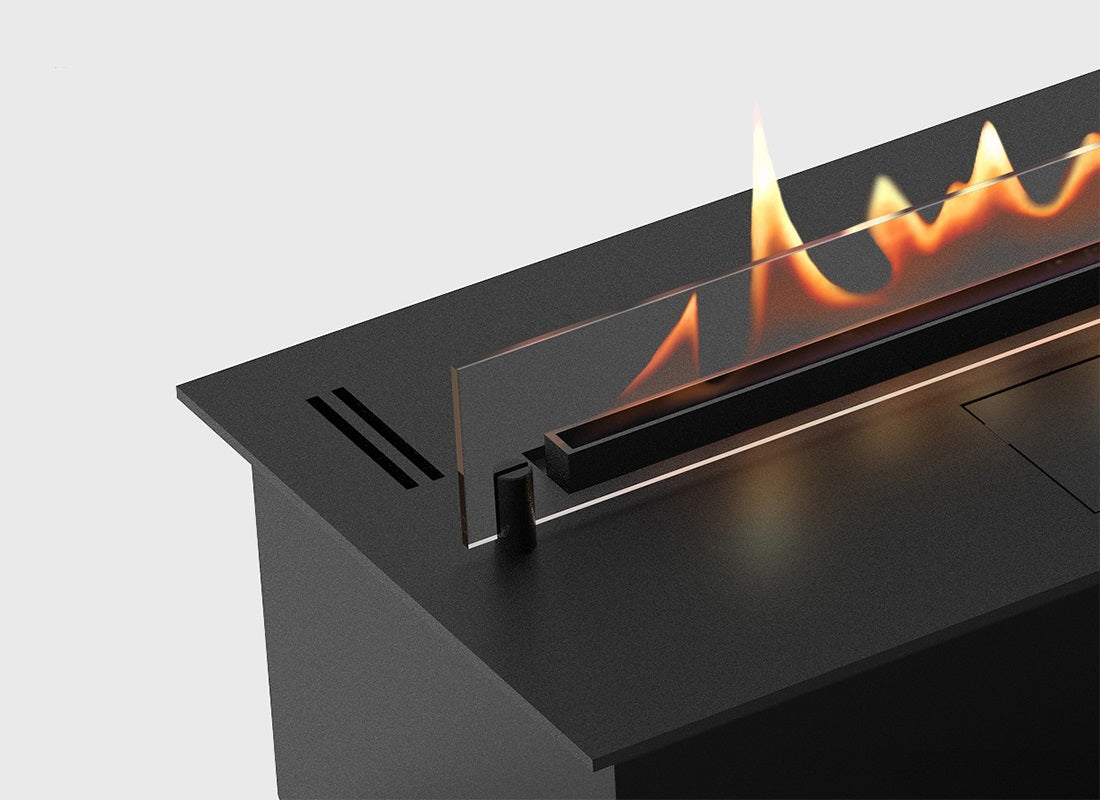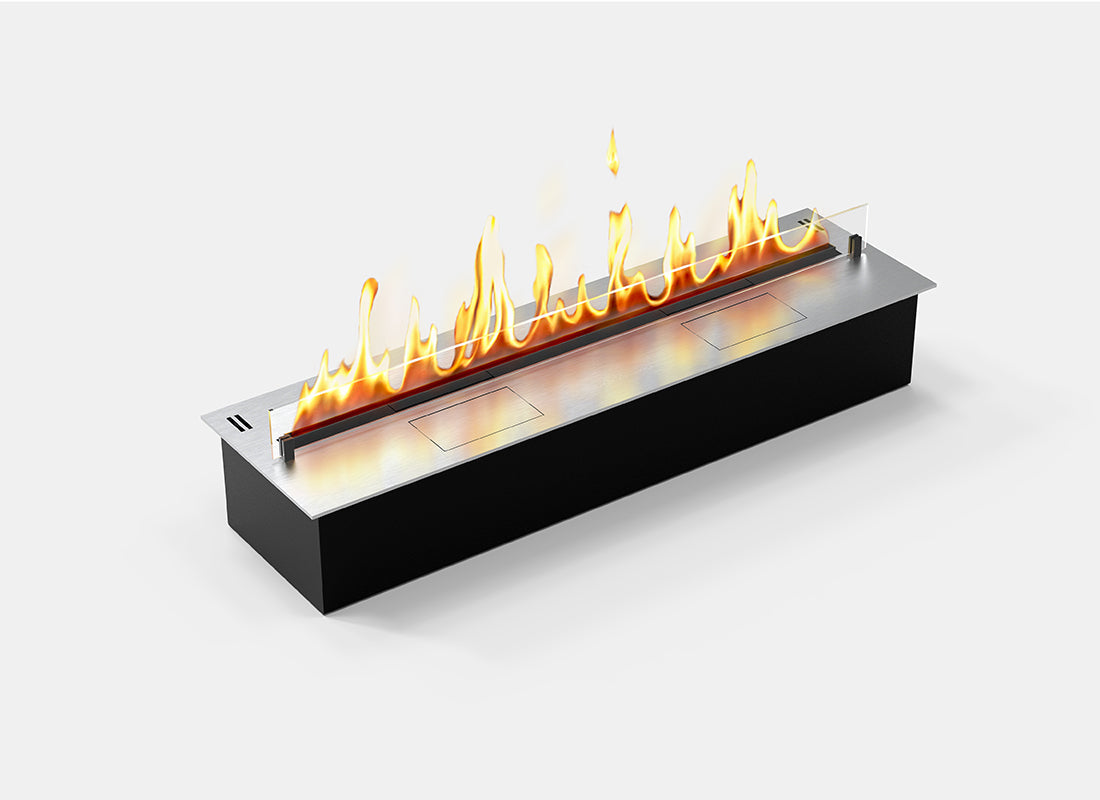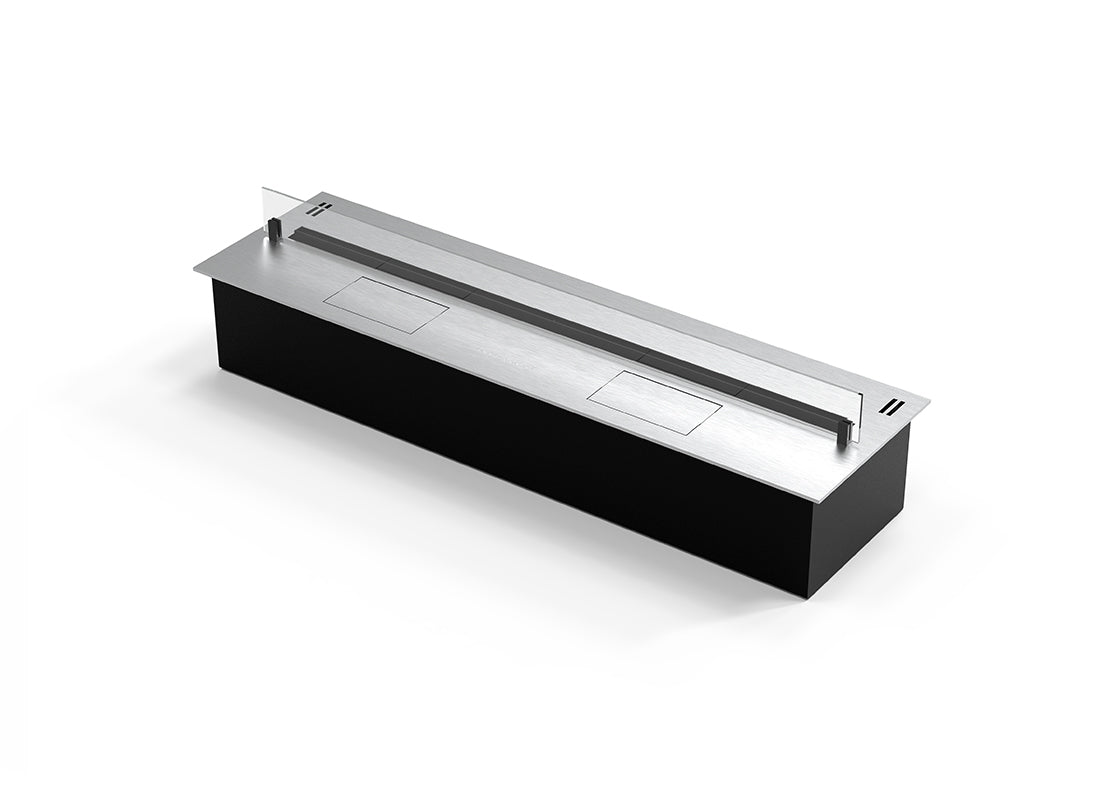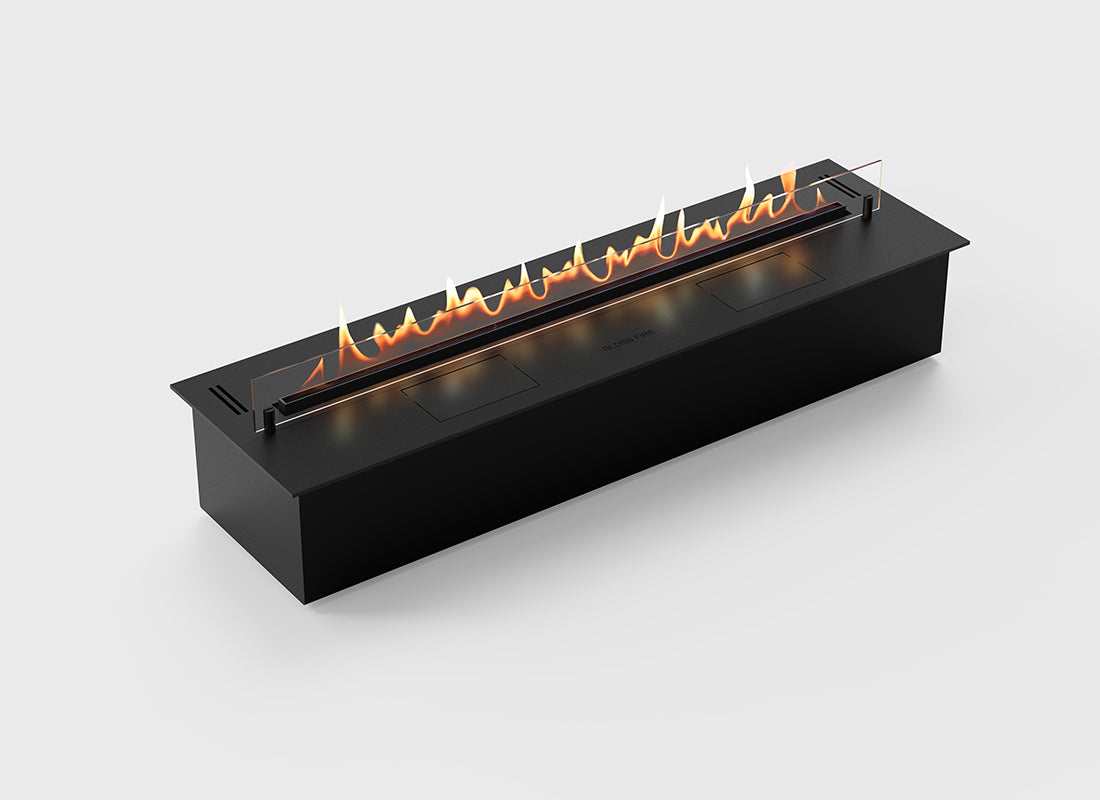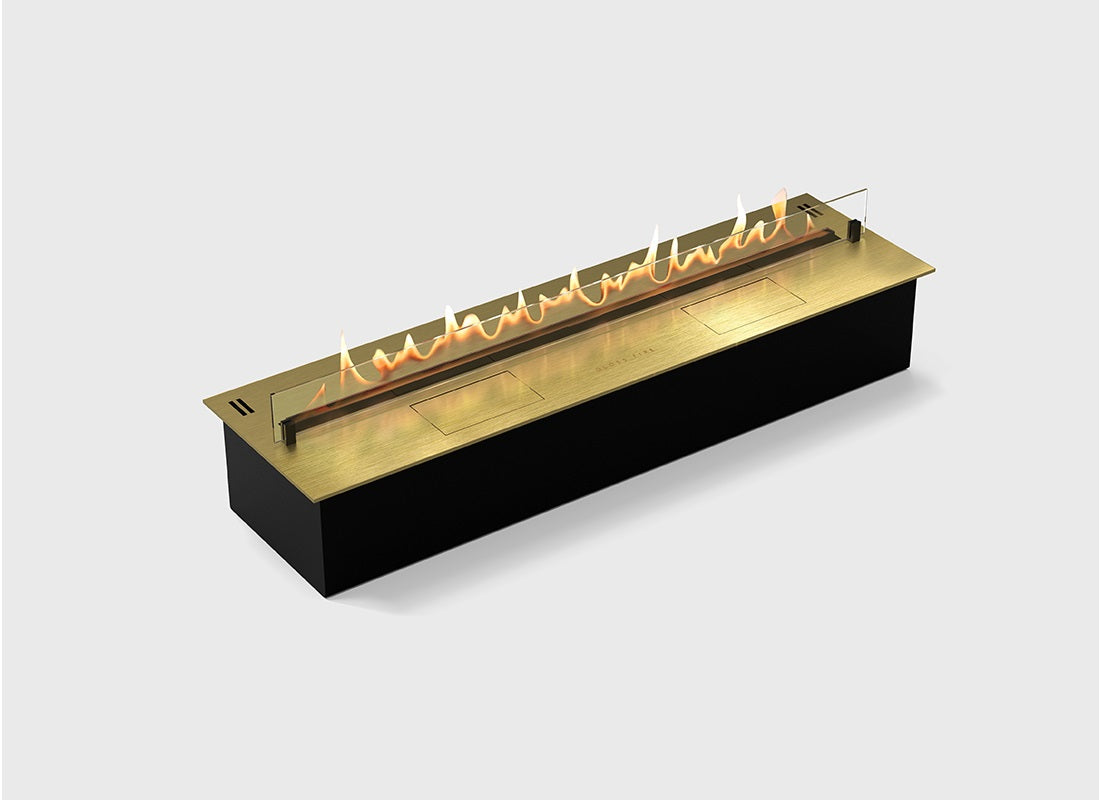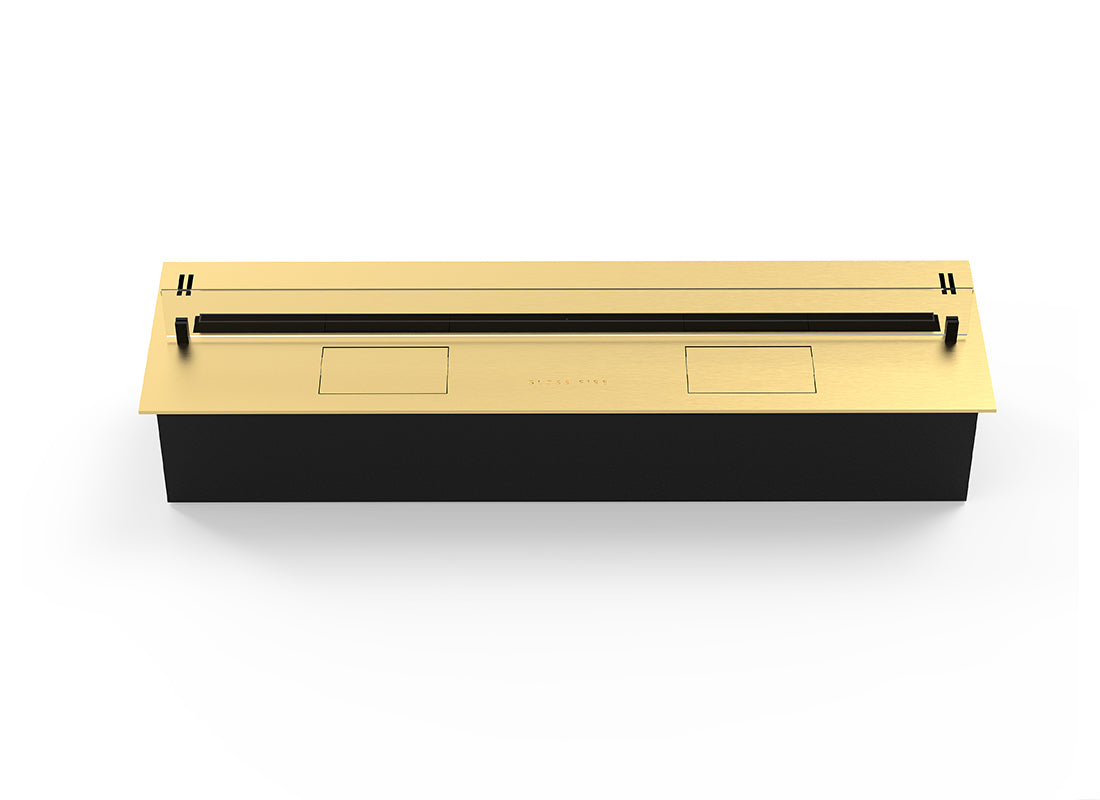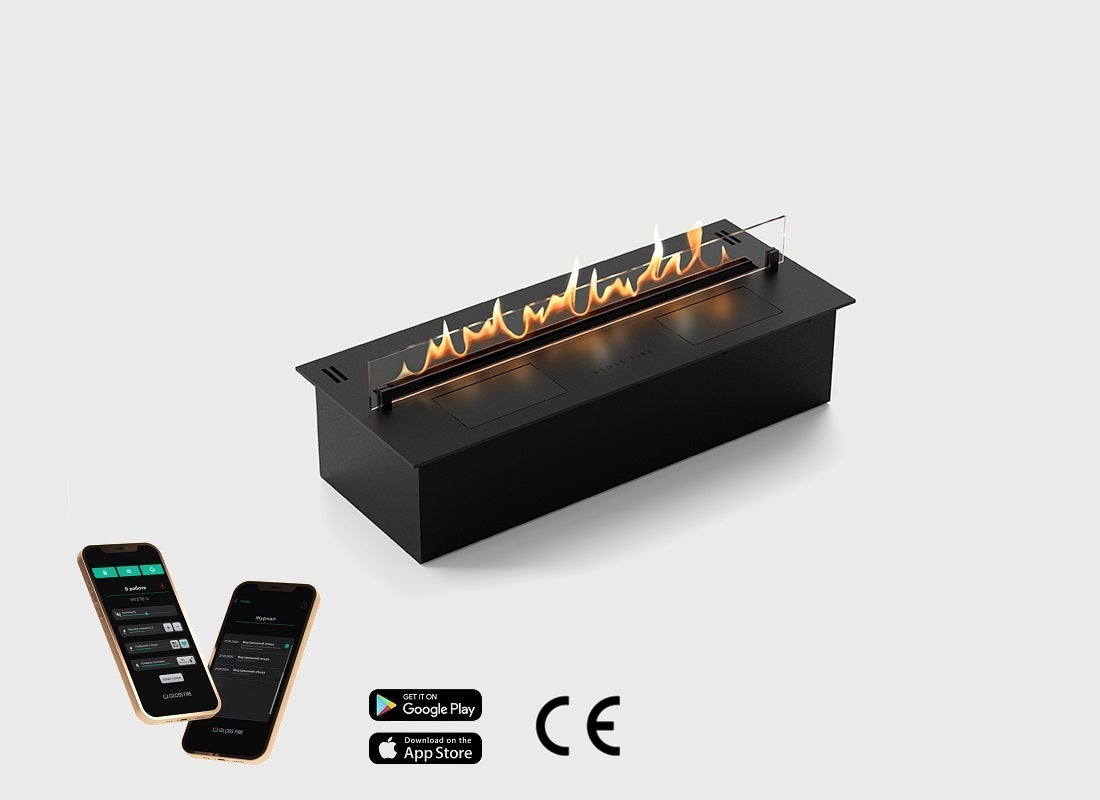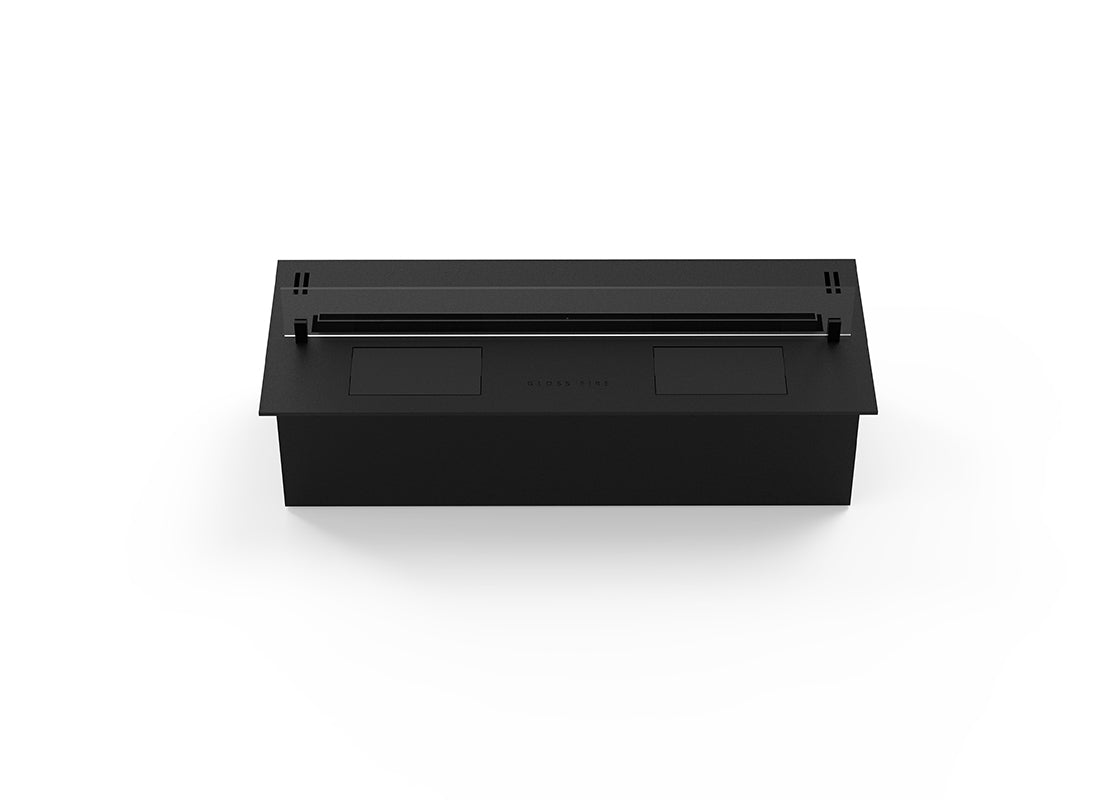Filters
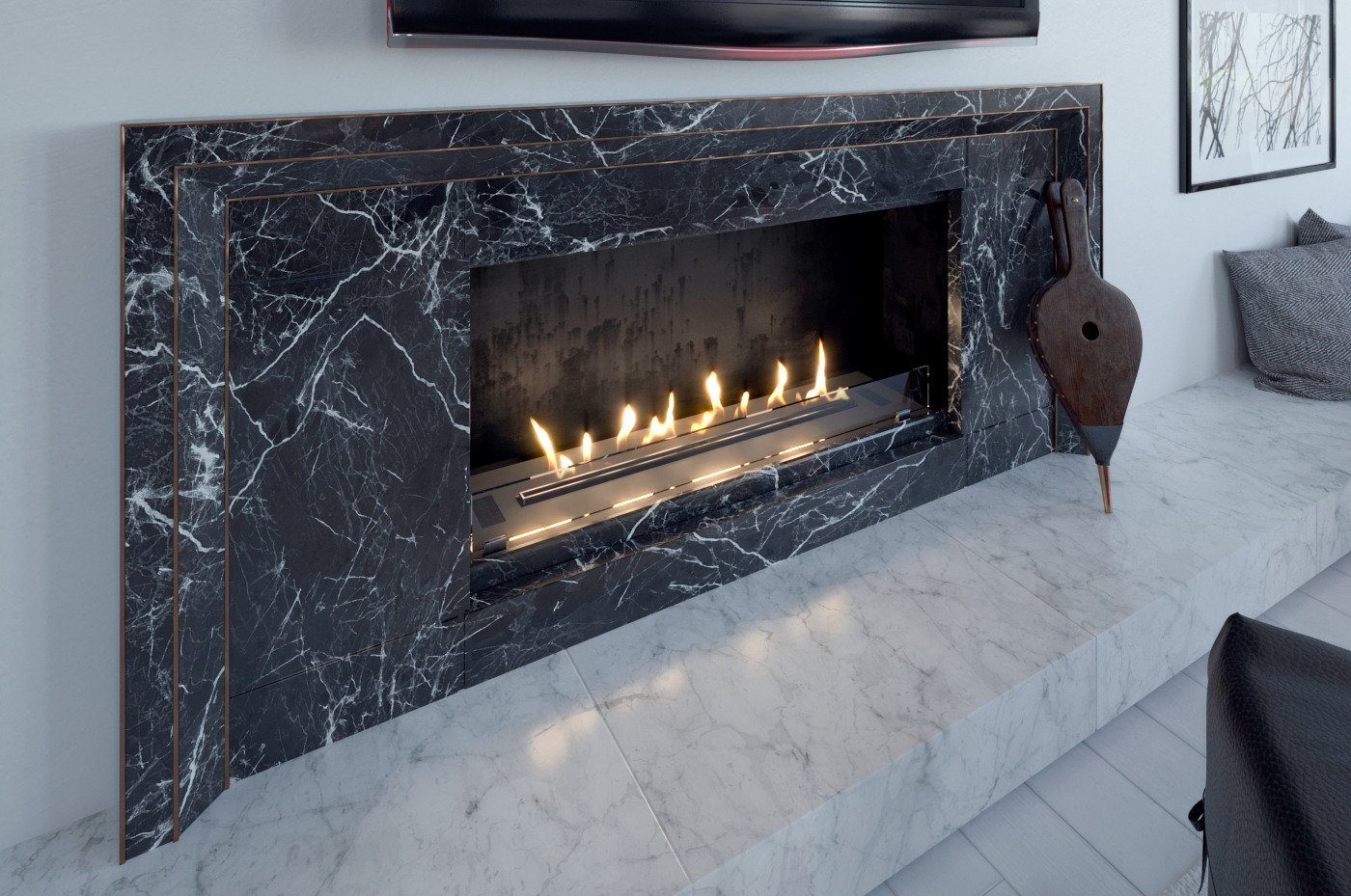
Bio ethanol burners
What is a Bio Ethanol Burner and How Does It Work?
A bio ethanol burner consists of a metal reservoir filled with clean bioethanol fuel, usually lined with stainless steel, and fitted with a wick or tray designed to control flame height. An ethanol burner is simple to use: pour in the fuel, ignite carefully, and watch a steady, bright flame appear. The bioethanol fuel burner offers real heat and atmosphere with no soot, smoke, or lingering odour — ideal for modern living spaces and restaurant installations.
These burners can be placed inside custom fireboxes or existing fireplaces . An ethanol burner for fireplace can be retrofitted into traditional mantels, while a bioethanol fireplace burner is built specifically for modern needs. Since these units don’t need ventilation, they’re quick to install and perfect for apartments, conversion projects, and feature walls. Plus, clean-burning fuel cuts down on mess, making upkeep as easy as wiping a surface after use.
Types of Bioethanol Burners for Every Need
Standard and Ribbon Burner Boxes
A bioethanol burner box typically comes in rectangular or cubic shapes, with a stainless steel tray and snuffer lid for safety. An ethanol burner box is a perfect fit for built-in fireplaces, offering consistent flame and easy replacement. Ribbon burners, known as bioethanol ribbon burner setups or ribbon fireplaces, are slim and long — ideal for linear fire features spanning entire walls.
These ribbon-style units suit the custom ethanol fireplace trend, where fire lines stretch across bespoke designs. With a bio flame burner, you create sleek, uninterrupted flame visuals in mantels or wall niches. The linear layout adds drama and sophistication, making these burners a favourite for designers and architects shaping contemporary spaces.
Small, Mini and DIY Burners
Small bioethanol burner models and mini ethanol burners cater to cozier setups — think intimate corners, bedside mantels, or tabletop fireplaces. Despite their size, they still provide lively flame and warmth. Small ethanol burner options are perfect for renters, offices, or compact rooms where traditional fireplaces don’t fit.
DIY enthusiasts might explore homemade bio ethanol burner ideas or homemade ethanol burner kits—creating functional flame modules using stainless trays, fuel-resistant wicks, and robust storage boxes. But caution is key: safety must come first. Only use approved materials, ensure fire-resistant surroundings, and avoid overfilling trays. DIY burners can be rewarding, but only when built responsibly.
Choosing and Buying the Right Burner
When selecting from available bio ethanol burners, think about flame size, fuel volume, and adjustability. A deeper tray holds more fuel and burns longer; some even offer rotating flame exposure. Whether you want a tall ethanol fire burner or a wide flame line, measure your designed fire space in advance to ensure perfect fit.
- Planika Rondo Commerce Insert Bioethanol Burner – Compact round insert with patented safety technology, ideal for both indoor and outdoor use without smoke or soot.
- Superior 5L Ethanol Burner – Extra-wide linear burner with a 100 cm flame line and a 5-litre capacity, perfect for long-lasting dramatic fire features.
- Icon Fires Long Burner Steel – Sleek stainless steel construction delivering a clean, continuous flame ideal for contemporary fireplace designs.
- DALEX 800 Automatic Bioethanol Fireplace – Smart fireplace burner with automatic ignition, safety sensors, and adjustable flame control for modern interiors.
- DALEX 900 Automatic Bioethanol Fireplace – Advanced ethanol fireplace with large fuel capacity and intelligent automation, providing long, safe and efficient operation.
Ethanol burners for sale are available online and from fireplace showrooms. A good supplier includes key components — stainless tray, snuffer cap, and sometimes heat-resistant glass covers. Look for burners certified for safety and compatible with your fireplace frame. This ensures you get both performance and peace of mind every evening you light up.


